Welcome to the March 2024 issue of

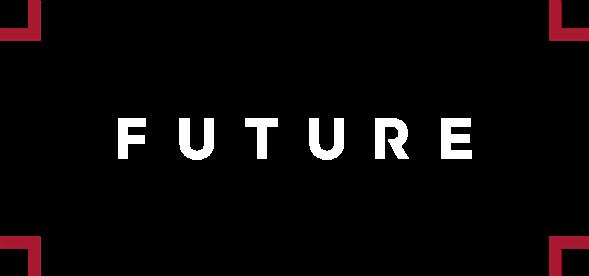




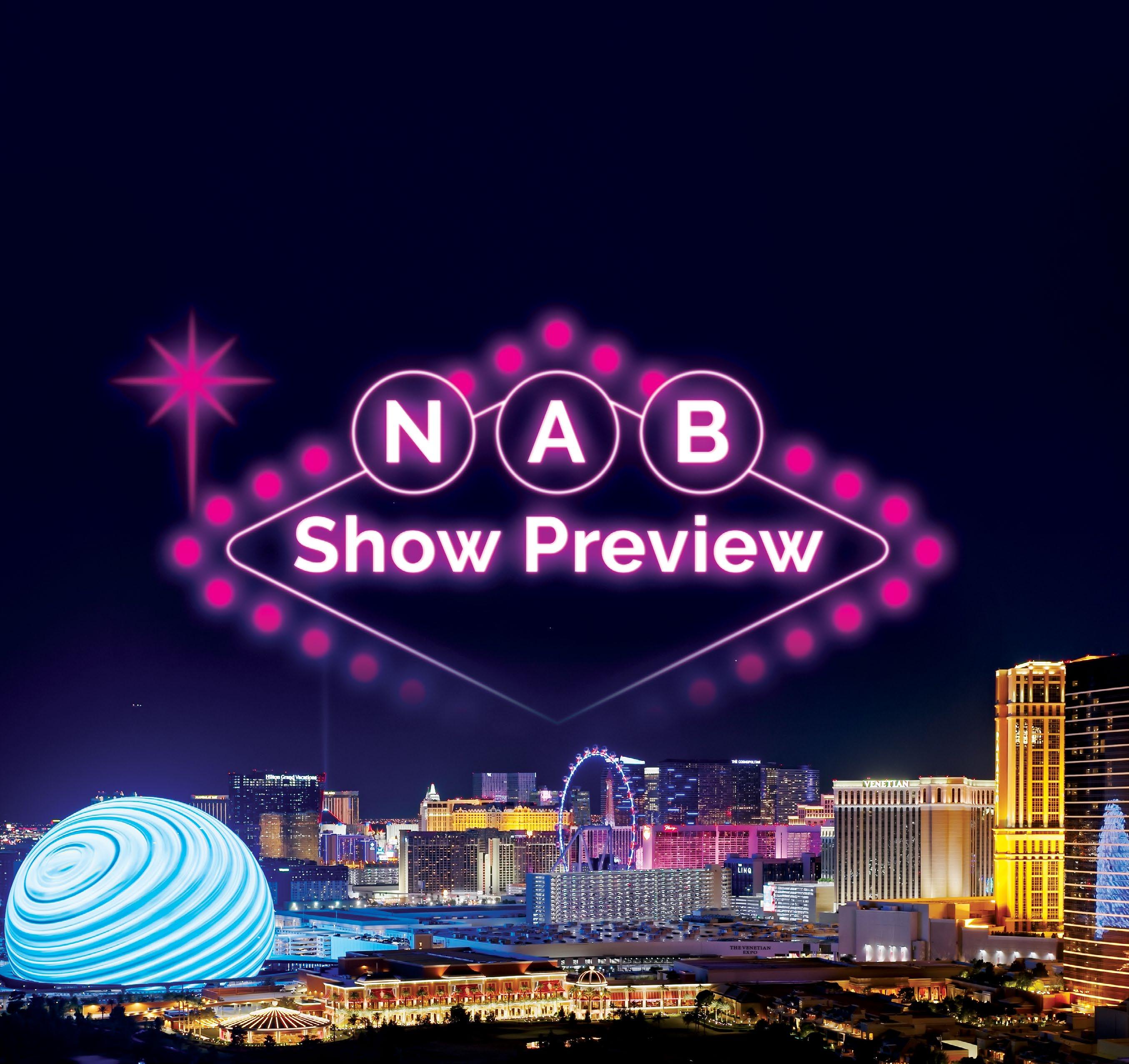

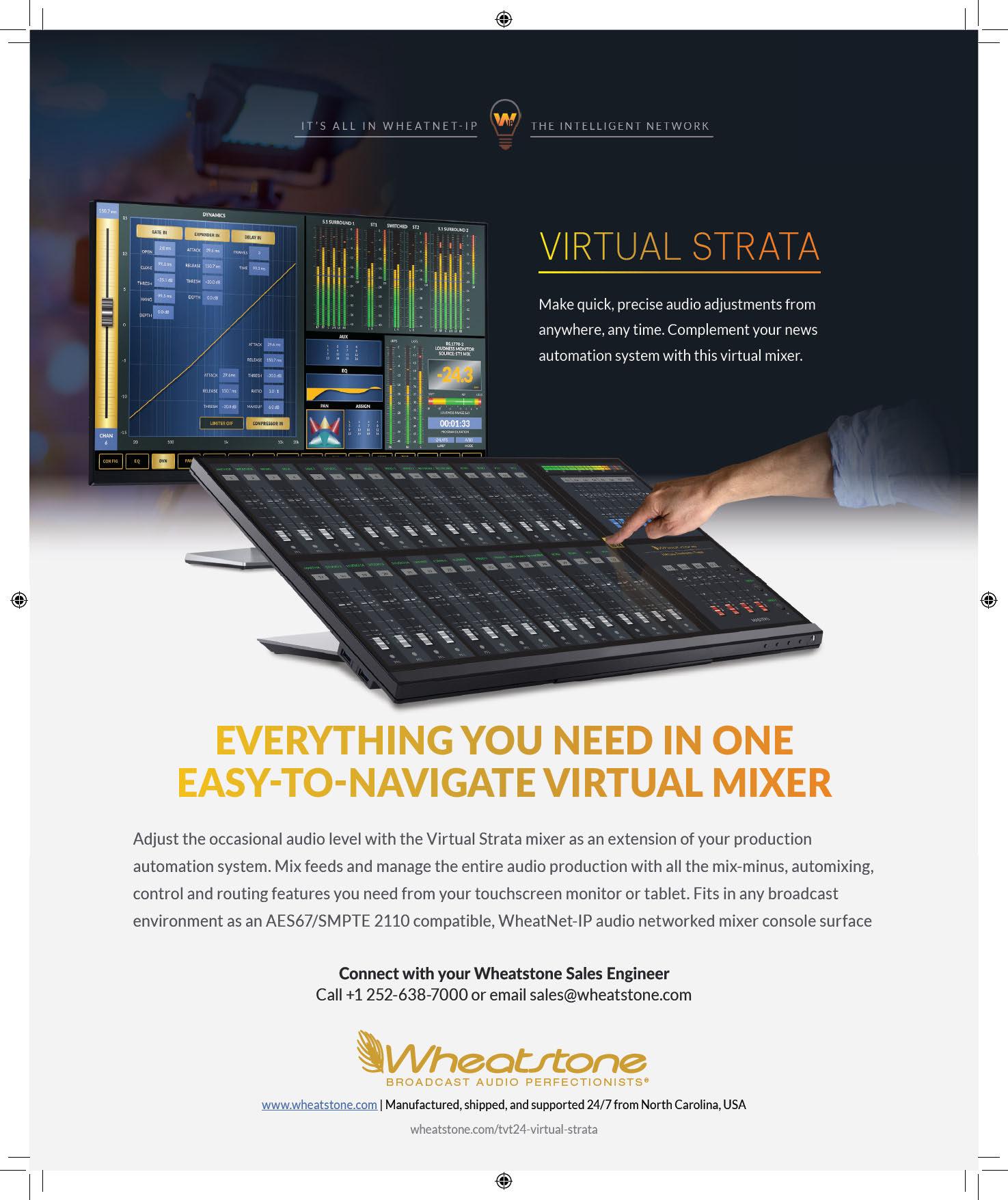
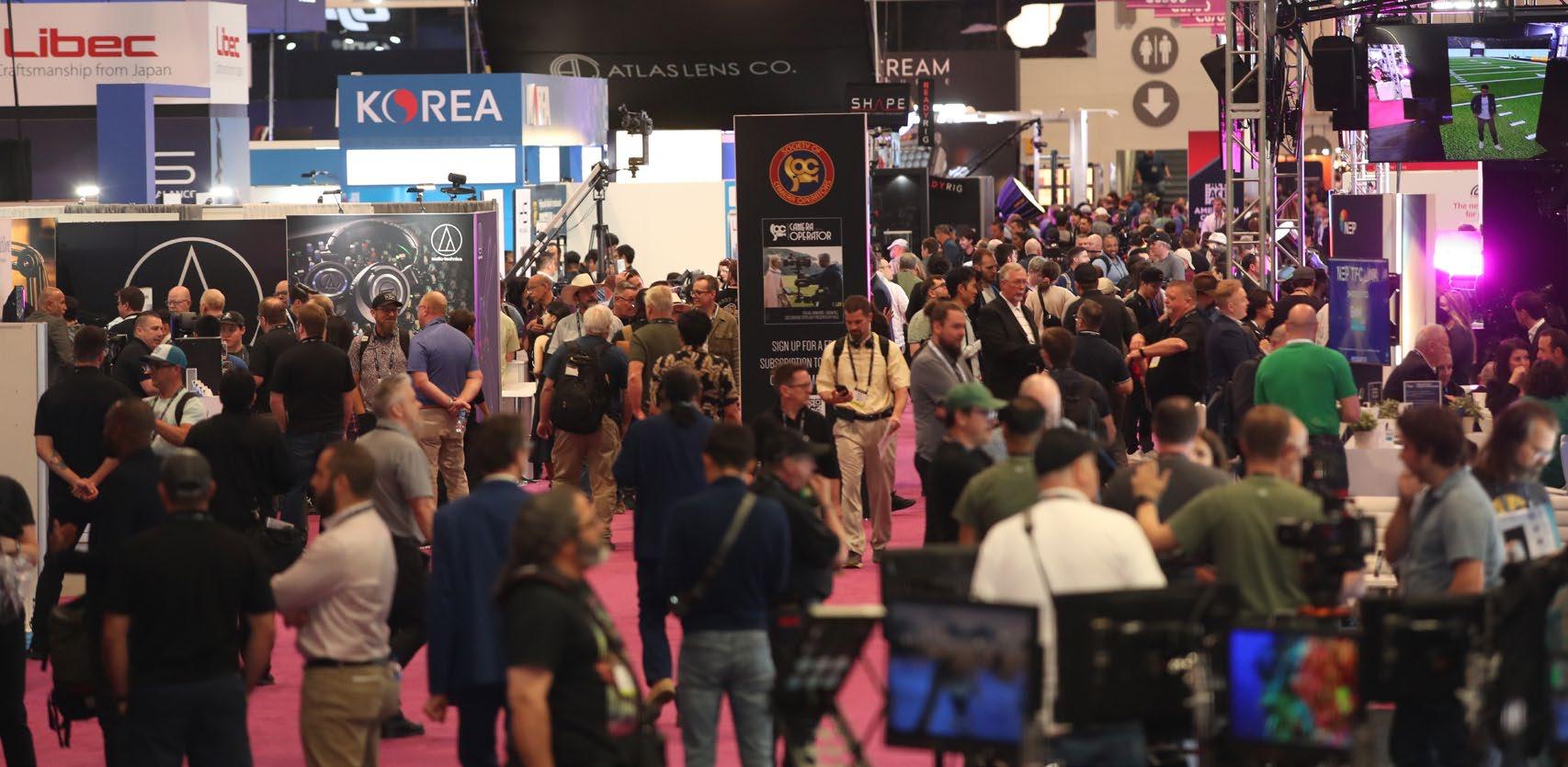
 James O’Neal
James O’Neal















 James O’Neal
James O’Neal





What is “television?” I posed that question 23 years ago in my first editorial for TV Tech. We were barely out of the dial-up modem era and were already declaring the death of the medium with the marriage of the internet and home computers (“every website can be a TV channel!”).
Television is defined as “a system for transmitting visual images and sound that are reproduced on screens, typically within people’s homes.”
That’s an accurate but clinical assessment of how we view the medium today, but for so many of us in this changing world of definitions, “television” also represents a communal experience that we share with others whether or not they’re in the home or across the country.
Enter VR, which tears away the communal media sharing experience, at least in the physical realm. That’s long been an argument among industry analysts and social scientists and the release of the Apple Vision Pro—which uses “spatial computing” in an augmented reality environment that integrates apps in your personal viewing space (among other things)—last month hasn’t lessened that contention. Reports of early adopters wearing the Vision Pro in public have spurred reactions of ridicule, possibly tinged with jealousy with a side of fear about how our fellow citizens will interact with each other in a future where the ability to distinguish between reality and virtual could inevitably lead to more conflict and alienation.
But we’ll leave the pontificating to the columnists and pundits, some of whom predicted the failure of Apple’s iPhone when it launched in 2007.
While we at TV Tech were not able to obtain a Vision Pro to test, our sister brands Tom’s Guide and TechRadar did, and here are some of their opinions:
Tom’s Guide called the Vision Pro “an incredible piece of tech nology, with eye and hand tracking interface that puts the compe tition to shame. But there’s some early bugs and some very weird things that come along with this revolution, including a freaky digi tal Persona version of yourself that can appear in FaceTime calls.”
It went on to call the “Vision Pro… a first-class entertainment de vice, and it will make even the biggest skeptic a believer in 3D movies.”

However, Tom’s Guide also took note of how the amount of time wearing the device can literally change one’s looks: “I like to think I’m not too vain, but the Vision Pro managed to amplify the wrinkles on my forehead. In fact, my wife said my Persona looked like I was put through an aging filter,” the reviewer said.
Immersive video was probably the most impressive aspect: “If you want to take entertainment to the next level, there’s Immersive Video, a new format that delivers a 3D experience via 8K recordings with a 180-degree field of view,” Tom’s Guide said. “For example, I nearly lost my breath when I watched a female highliner attempt to essentially walk a tightrope between two mountains 3,000 feet above the Earth in Norway.”
TechRadar also took the Vision Pro for a spin and was equally impressed with immersive movies but also noted its somewhat clunky form factor. Nevertheless, they were impressed enough with the device, albeit hesitant on whether its strongest suit lies in the professional or leisure worlds as well as the inherent bugs that come with first gen-consumer electronics.
“I don’t know if I would spend $3,500 on it,” the reviewer said. “The reality is that I don’t even spend that much on my computers (if I can help it). Is a device that’s equal parts work machine and entertainment room worth those extra bucks? Maybe [but] to be fair, it’s early days.”
The jury may still be out on whether the Vision Pro will succeed (and how you define “success”), but one thing is clear: it’s not television (never was) but who cares? It’s a new display device that—like its predecessor the iPhone—has the potential to upend our medium. And TV Tech will continue to report and assess its impact on our industry.
Tom Butts ContentDirector tom.butts@futurenet.com
FOLLOW US
www.tvtech.com
twitter.com/tvtechnology
CONTENT
Content Director
Tom Butts, tom.butts@futurenet.com
Content Manager
Terry Scutt, terry.scutt@futurenet.com
Senior Content Producer
George Winslow, george.winslow@futurenet.com
Contributors: Gary Arlen, Susan Ashworth, James Careless, Kevin Hilton, Craig Johnston, Bob Kovacs and Mark R. Smith
Production Managers: Heather Tatrow, Nicole Schilling
Art Directors: Cliff Newman
ADVERTISING SALES
Managing Vice President of Sales, B2B Tech Adam Goldstein, adam.goldstein@futurenet.com
SUBSCRIBER CUSTOMER SERVICE
To subscribe, change your address, or check on your current account status, go to www.tvtechnology.com and click on About Us, email futureplc@computerfulfillment.com, call 888-266-5828, or write P.O. Box 8692, Lowell, MA 01853.
LICENSING/REPRINTS/PERMISSIONS
TV Technology is available for licensing. Contact the Licensing team to discuss partnership opportunities. Head of Print Licensing Rachel Shaw licensing@futurenet.com
MANAGEMENT
SVP, MD, B2B Amanda Darman-Allen
VP, Global Head of Content, B2B Carmel King
MD, Content, Broadcast Tech Paul McLane
VP, Global Head of Sales, B2B John Sellazzo
VP, Global Head of Strategy & Ops, B2B Allison Markert
VP, Product & Marketing, B2B Scott Lowe
Head of Production US & UK Mark Constance
Head of Design, B2B Nicole Cobban
FUTURE US, INC.
130 West 42nd Street, 7th Floor, New York, NY 10036


responsibility for errors or inaccuracies in such information. You are advised to contact manufacturers and retailers directly with regard to the price of products/services referred to in this publication. Apps and websites mentioned in this publication are not under our control. We are not responsible for their contents or any other changes or updates to them. This magazine is fully independent and not affiliated in any way with the companies mentioned herein.
If you submit material to us, you warrant that you own the material and/or have the necessary rights/permissions to supply the material and you automatically grant Future and its licensees a licence to publish your submission in whole or in part in any/all issues and/or editions of publications, in any format published worldwide and on associated websites, social media channels and associated products. Any material you submit is sent at your own risk and, although every care is taken, neither Future nor its employees, agents,subcontractors or licensees shall be liable for loss or damage. We assume all unsolicited material is for publication unless otherwise stated, and reserve the right to edit, amend, adapt all submissions.
Please Recycle. We are committed to only using magazine paper which is derived from responsibly managed, certified forestry and chlorine-free manufacture. The paper

The Society of Broadcast Engineers will be celebrating its 60th anniversary at the 2024 NAB Show. Kicking things off is the organization’s annual SBE Ennes Workshop at the NAB Show, April 12-13. The SBE Ennes Workshop features two separate educational tracks: RF 101 Boot Camp and MediaOver IP Essentials. Attendees can register for one or the other via the NAB Show website. Both will be held in the Las Vegas Convention Center West Hall.

the Society's activities and programs to its members, the meeting will also highlight the SBE's 60 years since its founding. Member accomplishments are also recognized at the meeting, which is followed by a reception and prize drawings for attendees.
The highlight of the SBE activities at the convention will be the annual Membership Meeting and Member Reception both held on April 15. In addition to updates about
SBE's booth in the West Hall (W4732) will be open Sunday through Wednesday of the convention. The SBE will hold a meeting of the Board of Directors on April 13. Complete details on all the SBE events are posted at sbe.org/sbe-2024-nabshow/.
Tom ButtsSince construction began on the Las Vegas Convention Center during the pandemic, trade show attendees have had to navigate the LVCC in new ways, moving from one hall to another—and this year is no exception.
Once again, according to Chris Brown, executive vice president and managing director, NAB Global Connections and Events, the show has had to adjust to the multi-year reconstruction project underway at the LVCC, which this year finds the North Hall undergoing renovation.
With both levels of the South Hall now available, the show will be using those exhibit spaces and adjacent meeting rooms for the first time since 2019. Navigation
across the show will be facilitated by the convention center’s underground Tesla transport system, free golf cart rides between the Central and South Halls, and a new hallway connecting the Central and West Halls.
“While the Central Lobby will be reconfigured a bit, the big news is the Starbucks and food court will remain open,” Brown says. “The Central Grand Lobby, adjacent to the food court, will once again be a center of activity at the show, with the NAB Store, NAB Amplify+ VIP Lounge and another exciting activation from Vu and MMRC.”
Fred Dawson

Content creator and innovator Shira Lazar will host the NAB Show’s Main Stage during the Las Vegas gathering, April 13-17, at the Las Vegas Convention Center.
Lazar hosted discussions on the convergence of media, entertainment and technology in 2017 as the show’s first M.E.T. (Media, Entertainment, Technology) Digital Evangelist, NAB said.
In 2011, Lazar unveiled her web-first news brand “What’s Trending.” She has a deep understanding of the evolving media landscape and an engaging stage presence, NAB said. She has spoken at SXSW, VeeCon, CES and C2, was named one of Fast Company’s Most Influential Women in Technology and was featured on NFTNow’s NFT100 Most Influential.
"I'm absolutely thrilled to be collaborating with NAB once again,” Lazar said. “It's a wonderful opportunity to celebrate the incredible talent and achievements in the media industry, while also casting our gaze forward to the exciting innovations and opportunities on the horizon. I'm bullish on exploring how we can push the boundaries together."
Lazar is also the co-founder of Peace Inside Live, a wellness consulting and advisory firm dedicated to enhancing well-being within modern companies through customized programming, both in-person and online.
George Winslow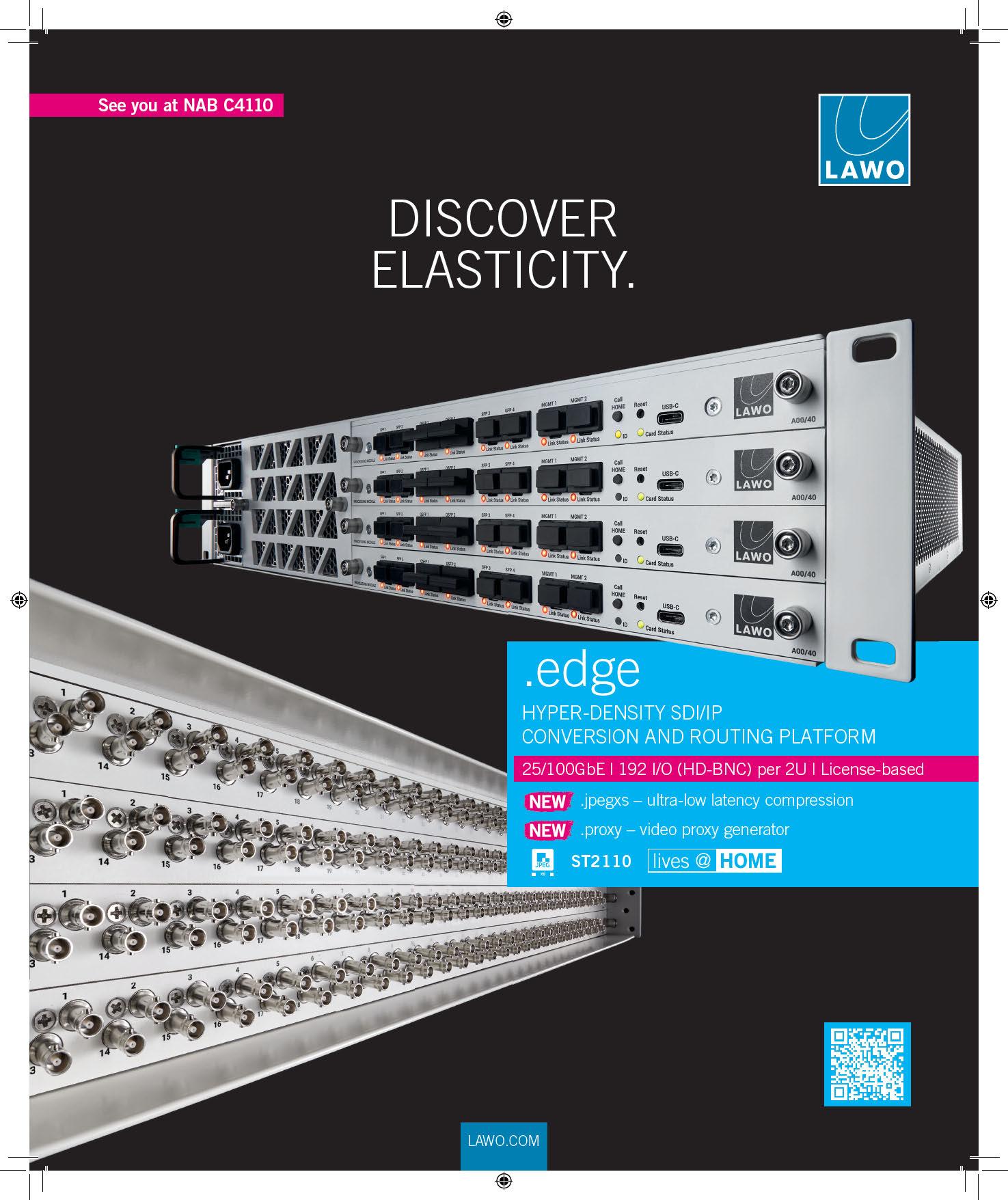 OPINION
OPINION
During a recent interview I had with Hadassa Gerber, the chief research officer at TVB underscored the importance of communicating to companies and their ad agencies the synergy between linear broadcast television and their websites.
“The reason that we make it such a point about television motivating people to go online is [because] so many advertisers are just looking at the last click,” says Gerber. “Well, how did they get there in the first place?”
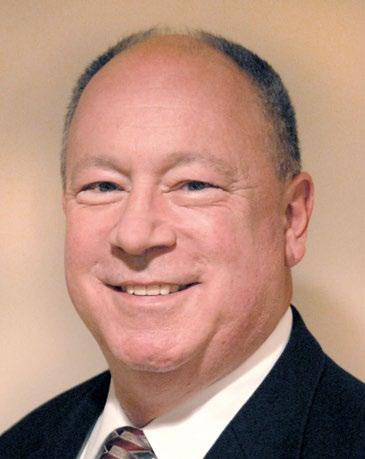
Phil Kurz
TVB’s 2024 Media Comparisons Study makes a strong case that in many instances it’s television. Of the 4,000 respondents to its survey, 60% said TV ads motivate them to begin doing research on a product that’s caught their eye. For autos, that figure climbs to 72%.
Granted, TVB is a trade association representing local TV broadcasters. But the group hired German research firm GfK to conduct the research, and it would be in neither the interest of GfK nor TVB to risk losing credibility by
fiddling with the results.
The takeaway for broadcasters is linear TV and websites work well together in serving the public and advertisers alike. Just as important is the effect the combination has on reach. Combining the reach of broadcast websites and broadcast television extends total reach by 4%.
To put that into perspective, consider cable TV and broadcast. “If you take broadcast as a base, and you add on cable, that doesn’t even add a whole reach point. It’s 0.8%,” she says.
 Hadassa Gerber
Hadassa Gerber
While this may seem obvious, Gerber says she has a slide in her presentation for members that explicitly lays out this fact to drive home how important the two together are to advertisers. Perhaps it’s a good time to begin reiterating to advertisers that the consumer journey that ultimately ends up in a web click often begins by raising awareness via linear TV. One other thought: as NextGen TV, an IP-based television/data delivery mechanism matures, broadcasters would be wellserved to begin planning how to leverage it to amplify their web presence.
The Society of Motion Picture and Television Engineers (SMPTE) with the European Broadcasting Union (EBU) and the Entertainment Technology Center (ETC), have released a report on Artificial Intelligence (AI) and its effect on the media.

"When we started this project in 2020, many saw AI as technically challenging, risky, costly and even scary," said task force co-chair and AMD Fellow Fred Walls. "Since then, it has become clearer that AI will transform the media industry from preproduction to distribution and consumption. This report is a great read for those looking to understand AI and how it is being deployed in media, as well as the important roles of standards and ethics."
The report provides media professionals with a background on both AI and Machine Learning (ML). It begins with a technical understanding of the two technologies followed by the effect they will likely have on the media landscape. The report also examines AI ethics and ends by discussing the role that standards can play in AI/ML's future.
The report is available for download at smpte.org.
George Winslow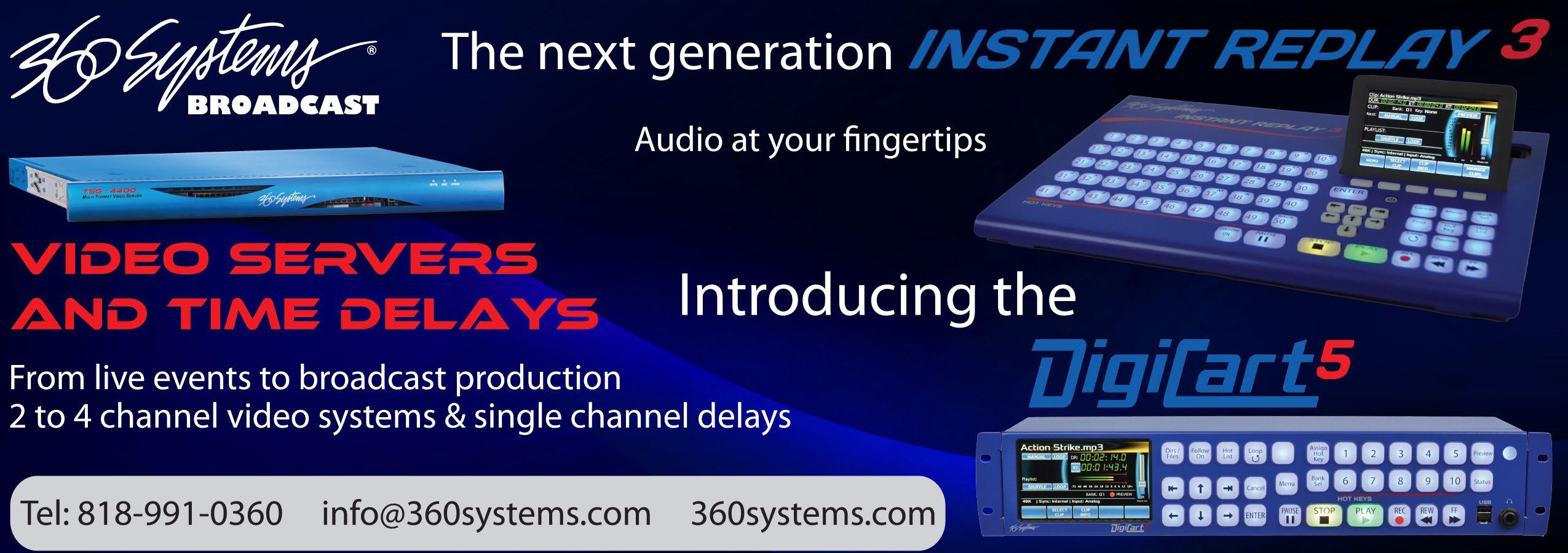
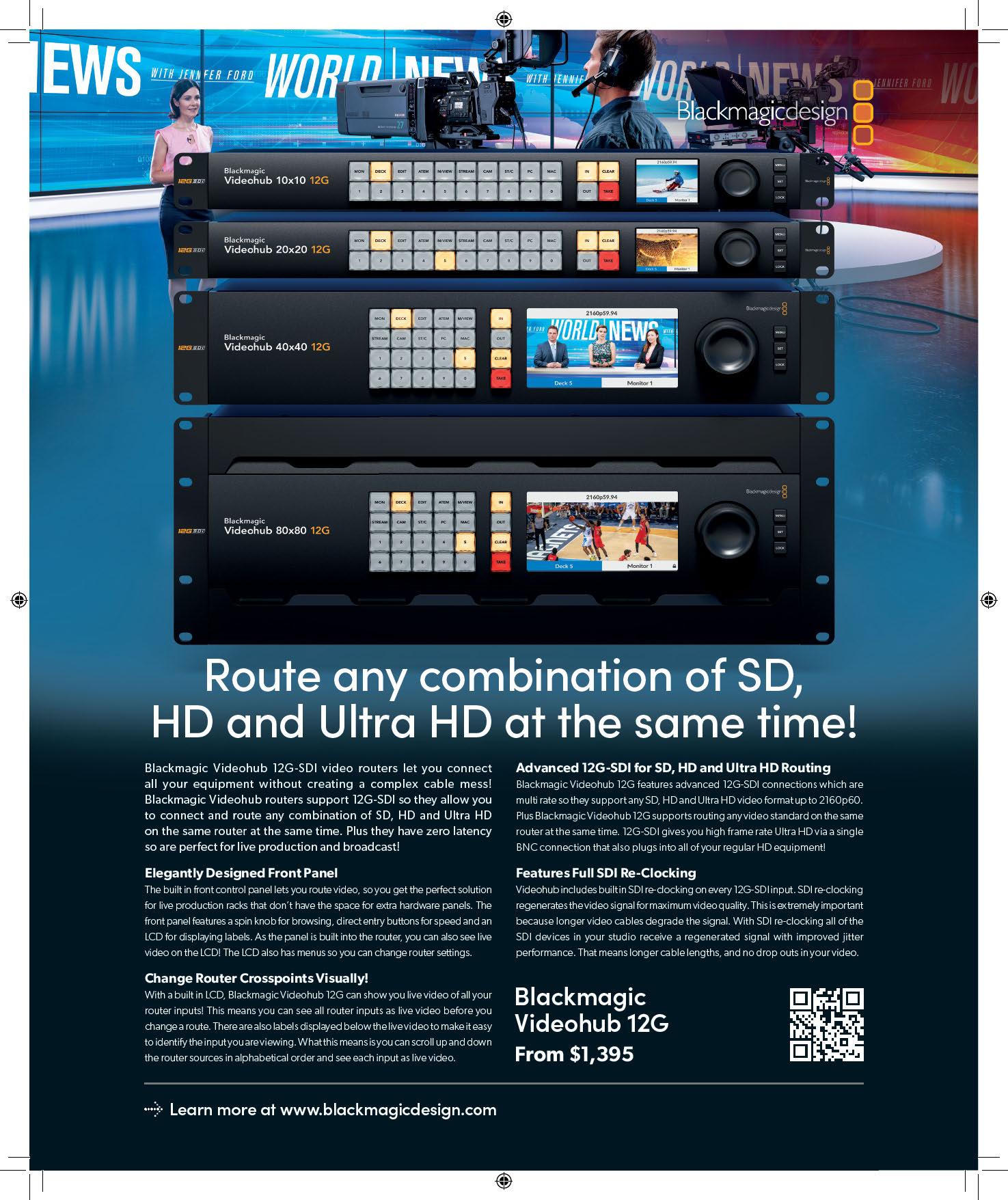

Year one of the NAB Show’s second century is shaping up to be a window on a future that broadcasters will be able to imagine a little more confidently than in recent years.
“As an industry, we have the opportunity to set the tone for the next 100 years,” says Chris Brown, executive vice president and managing director of NAB Global Connections and Events. “It’s an exciting time to see technology reach a point where truly extraordinary advances are possible—in how content is produced, distributed and consumed.”
For TV stations and their network affiliates, putting these technologies to work across OTA, MVPD, CTV, and streaming outlets to keep audiences engaged while
preserving the primacy of broadcast’s role in serving the public is the priority, abetted by new avenues to lowering costs across legacy as well as next-generation operations. While broadcasters—like other segments of the M&E industry—are dealing with serious “headwinds,” as Brown puts it, unlike recent events in the Covid and post-pandemic era, this year’s show is built on a “foundation of
“Everybody is trying to be creative and trying to find the space where they can have that differentiator against the competition.”
RICK DUCEY, BIA ADVISORY SERVICES
optimism with improving macroeconomic conditions.”
(Note: Brown is being succeeded this year by Karen Chupka, former executive vice president of CES and CTA chief strategy officer)
Along with highlighting an unprecedented confluence of advanced technologies that have simultaneously reached commercial viability for the entire M&E industry, the 2024 show—April 14-17 in Las Vegas—will feature an expanded agenda specifically tuned to broadcasters’ interests.
For example, there will be “roughly double” the number of sessions in the annual Broadcast Engineering and IT (BEIT) conference NAB jointly sponsors with the Society of Broadcast Engineers and a return to providing the off-floor “Broadcast District,” in the West Hall of the Las Vegas Convention Center which was introduced last year as a focal point for networking and learning that Brown says worked “spectacularly well.”
The upheaval in the streaming market, driven by consolidation and the popularity of ad-supported and FAST services, is forcing companies to distinguish themselves in an increasingly crowded market.
“There’s a lot happening,” says Rick Ducey, managing director at local advertising consultancy BIA Advisory Services. “Everybody is trying to be creative and trying to find the space where they can have that differentiator

against the competition.”
It’s an audience retention and building agenda that’s essential to driving ad revenue. While the explosion in ad-supported OTT services is squeezing the local TV ad take, “we still see it growing,” Ducey says. “All the TV groups have streaming plays and digital plays.”
A major factor shaping the future of TV advertising is broadcasters’ growing reliance on programmatic technology in conjunction with various modes of targeted ad placements streamed to connected TVs (CTVs), which, as Ducey says, are now “the runaway hit in advertising generally.”
TV groups’ efforts to maintain growth momentum is “really more about product expansion, and that means distribution of the current content and even producing additional content for things like the FAST CTV services they’re managing under their own brands or distributing through other platforms.”
And then there’s the looming business expansion opportunity embodied in the launch of ATSC 3.0 (aka “NextGen TV”). Attention devoted to the advanced broadcast standard will be more pervasive than ever at this show.
“ATSC 3.0 is becoming more and more of a mainstream technology in the broadcast industry and hence also at the NAB Show,” Brown says. “With broadcast transmissions available in markets covering 75% plus of the U.S. population, vendors are pretty much all integrating ATSC 3.0 into their commercial product lines. So the technology will be widespread on the exhibit floor.”
Once again the Advanced Television Systems Committee will be in the West Hall showcasing current and future applications of ATSC 3.0 technology, consumer receivers and set-top boxes, as well as highlighting ATSC 3.0 applications and services outside the U.S. ATSC 3.0 topics will also be addressed during the four-day BEIT Conference.
No station owner has been more aggressive about driving NextGen TV to market than Sinclair Broadcast Group. Achieving 75% coverage demonstrates ATSC 3.0 is now “on the map,” says Del Parks, Sinclair Broadcast Group president of technology. “That’s kind of a prelude to the next step,” which is “when can we sunset 1.0? That’s the real question.”
Sinclair and its station group allies in tandem with the NAB-led Future of Television task force are pressing hard for cooperation from CE manufacturers and retail dealers not only to create and market 3.0 TVs, media player dongles, and set-top boxes, but to let the public know what’s in store for viewers.

That means 3.0 OTA channels now up and running have to deliver “better experiences and additional features,” Parks says.
Toward that end, one of the strategies Sinclair is pursuing involves utilizing Technicolor’s Advanced HDR platform based on the Single Layer (SL) HDR standard to convert their SDR-formatted programming to HDR for viewing on SL-HDR-compatible TV sets. While SL-HDR 1 is way behind the other leading HDR formats in garnering support from TV OEMs, Sinclair isn’t alone moving in this direction, Parks says. “I believe there are other station groups adopting it,” he notes without naming them.
Parks says he’s “really optimistic” about the outlook for NextGen TV. Along with delivering HDR and 4K, “there’s a laundry list of experiences we can deliver to the consumer,” including “enhanced sound, advanced emergency information, HTML overlays that consumers can select or we can pop up.”
Public broadcasters, too, want to get ATSC 3.0 off the ground, but they have a tougher
row to hoe than the commercial stations, says Nebraska Public Media CTO Ling Ling Sun. Noting the successes of commercial lighthouse alignments, she says, “We haven’t been able to be part of that. However, we are upgrading our system to be ready to broadcast in 3.0.”
NPM is testing audience responses to potential 3.0-enabled features with an app supporting service enhancements and 4K HDR delivery over its internet feed. And there’s also a possibility of aligning its Omaha transmitter in a lighthouse arrangement with Iowa PBS.
As always, production and postproduction will be a primary topic at the NAB Show with a focus on cutting-edge technology supporting cost-saving efficiency and content innovation. “The internet and related advances in production tools have made high-quality content creation, at or near professional levels, something much more attainable for all,” Brown says.
Points of coverage at the Post|Production World Conference and show floor will include production virtualization, cloud-based and remote production and “an overall shift from hardware-based to software-based infrastructure,” he adds. “Of note, we will have a unique demonstration of a cloudbased workflow in the ‘Connect Zone’ in the West Hall, produced in partnership with Diversified. We will also be featuring an AWS News Studio in the West Hall lobby using a cloud-based workflow.”
The show will provide much-needed help for producers unsure of how far to go in putting these new technologies to use, says Dave Van Hoy, president of the Advanced Systems Group (ASG) consultancy. “One of the big challenges today is there are so many options in ways to approach production, it


takes a lot of sorting out to find the right way, not only for each client but each production that client does,” he says. For example, “there’s a lot of talk around in-cloud tools,” he notes. But before assuming going to public cloud-based workflows is a slam dunk, producers “have to decide what the goal is.”
Generally speaking, “It’s pretty unclear that using public cloud technology actually saves you money over a period of time,” he says. “If you’re an ongoing operator with egress and ingress costs, I’m not sure [the public cloud] is less expensive” unless the goal is to save money by supporting remote collaboration.
In any event, Van Hoy adds, the major benefit resulting from reliance on cloudbased workflows is “it allows you to be more nimble by quite a bit.” Coming to this year’s NAB Show, ASG customers are looking at how to accommodate “more software-defined productions, even in on-premises hardware like software-defined switchers and routers, so they can be agile at the least possible costs.”
Another production-related topic which the NAB Show will again shine a light on is the question of whether to apply SMPTE
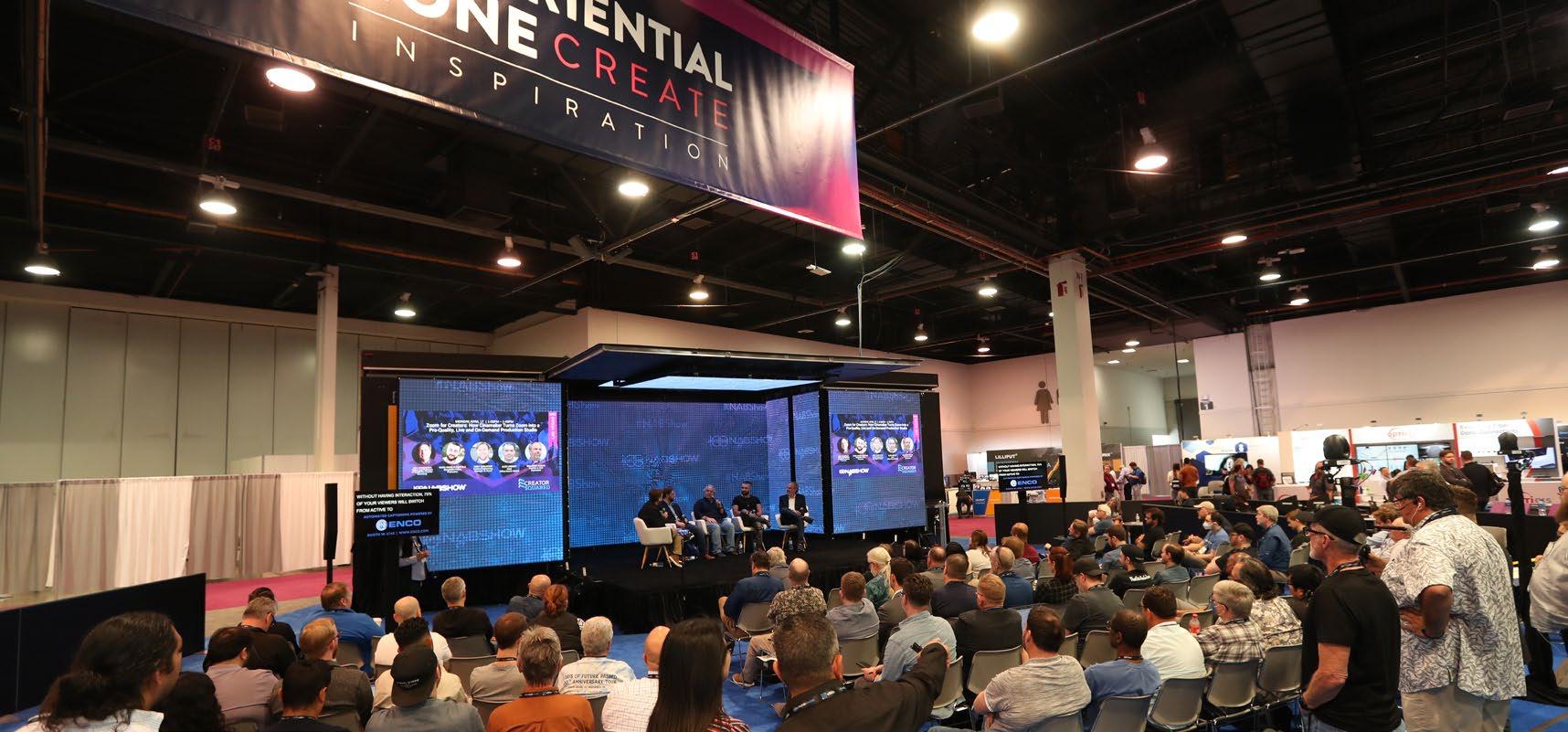
ST 2110 techniques to move out of SDI to IP-based workflows. While the cost-saving case for doing so in many instances “is a no brainer,” there’s still a lot of hesitation in the marketplace, Van Hoy says.
However, in the case of virtual production technology and the use of LED walls, while adoption isn’t universal, the benefits are well understood with usage growing “up and down the chain” from broadcast news operations to big productions, Van Hoy says. Even producers who don’t yet have the in-house skillsets to use the technology want “to make
sure they’re prepared with power and lighting laid out to where that infrastructure can be added as an option,” he adds.
Broadcasters will also have an opportunity for in-depth exploration of AI’s ramifications for their businesses. “This trend is important and pervasive enough that we are creating a Guide to AI that will point to the programs and exhibitors that focus on some aspect of AI,” Brown says. l
To register for the show, visit www.nabshow.com

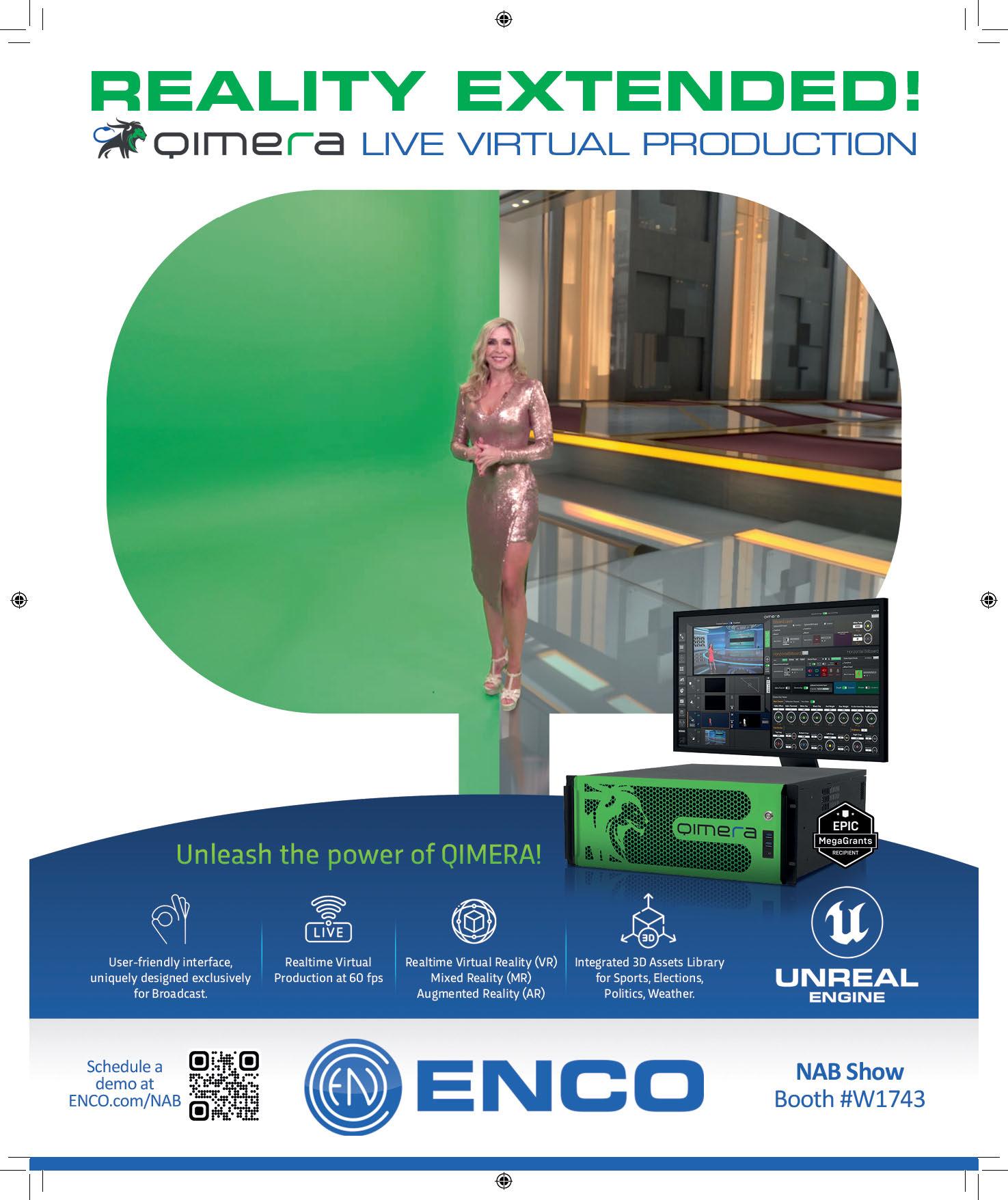
From PTZ to cinematic, IP and HDR, the picture is just the beginning
 By Phil Rhodes
By Phil Rhodes
It’s been a while since the pixel count race was a big issue for broadcast production. As we head into the 2024 trade show season, then, thinking centers on what upcoming technology might make possible—on techniques, rather than specifications.
Take Blackmagic Design for example; the company’s foray into cloud contribution is talismanic of the changes which turned half of West Hall into a cloud computing village at last year’s show and demonstrated how the cloud and IP are impacting the camera’s role in new digital workflows.
“We introduced the [Blackmagic Camera] iPhone app a little while ago,” said Bob Caniglia, director of sales for the company in North America. “You can shoot with that phone, work with the cloud service, share proxies. The camera to Blackmagic cloud to Resolve workflow started with the camera app. The Ursa Broadcast G2 [camera] is now in beta for that software too. That's a good direction on where we're going.”
Bonded cellphone links are an established alternative to microwave or satellite links, although similar things with single 5G connections are more nascent. Still, regardless of the connection type, Caniglia points out that the benefits of cloud systems
help with both cost and expediency. “People can directly link to a broadcaster's box. If someone's out in the field and they shot something, they can send it and get it on air faster than searching YouTube.”
Meanwhile, traditional broadcast configurations have become ever more accessible. “We have a lot in the education, house-of-worship and live event spaces,” Caniglia says. “One reason we've done so well is the cost-performance ratio and the nimbleness of the gear. It's not a rackful for a switcher. If you need a spare, buy a second one and that's the same price as an output card on some other thing. Broadcasters buy our stuff for smaller rooms or backups because they can.”
One caveat of skyrocketing capability is sheer operability, with feature sets bigger than any single human could operate. “There are tools that you can use to overcome a

lot of that,” Caniglia reflects. “Even if you were doing it software-only, you could do switching on one, audio on another, moving graphics around on another and camera control on a fourth. With macros and other things you can do a lot more. We have an open API and people have been able to write all kinds of macro stuff.”
That sort of automation and remote control understandably boomed during the pandemic. Jim Jensen, Panasonic’s senior category owner for PTZ & remote systems, reports that, in terms of sales “we don't see record numbers like we did during Covid, but we do see steady growth. We sell a number of different features and price categories and we're finding demand for a good quality, flexible PTZ camera with flexible workflow, often replacing low end studio cameras.”
Here, flexibility often means vast connectivity. “We're seeing demand for SRT,” Jensen continues. “A couple of years ago there wasn't much. Some users use NDI [and] ST 2110 has become a big topic for some customers, with them using a higher-end PTZ in the studio, so we have an ST 2110 option in the AW-UE160. It’s one of the first in the industry to offer that because we listened to our customers.”
Demand for glossy images has pushed PTZ cameras to ever greater heights, but Jensen reflects that the push for pixels is about flexibility as much as quality. “On our one-inch sensors that are 4K, we're able to create three regions of interest which are 16:9 full HD images within that 4K,” he said. “Because it's a larger imager, it gives them the flexibility to output one of those plus the full raster 4K, so that particular PTZ now has two images coming out of it.”
Panasonic’s involvement in everything from acquisition to display is a boon, Jensen concludes. “[Customers] are looking for a manufacturer that can do glass to glass, capturing and moving that signal through, switching it, and being able to display that particular event or production in very different ways. We're finding more customers
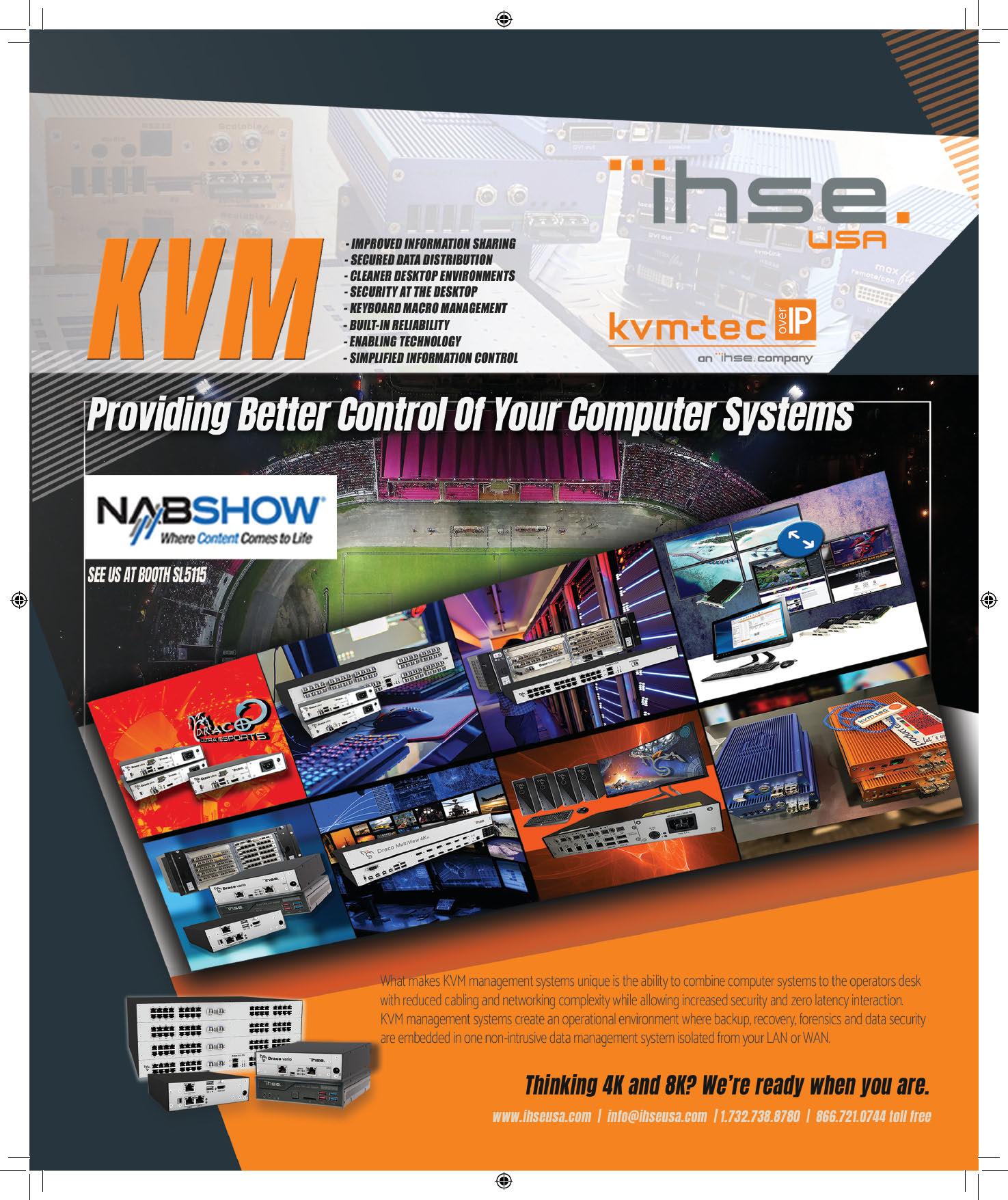
imaging tech
are asking about what we’re doing from a solution standpoint, and we've been able to provide something.”
HDR: AN ANTIDOTE TO THE PIXEL RACE?
If there’s an overriding theme for imaging technology at the 2024 NAB Show though, it’s HDR, which is sufficiently so well established that clients often expect it with little tolerance for increased complexity.
Klaus Weber, director of product marketing at Grass Valley, recalls when he supported the first ever live HDR production at an athletic championship in Europe in August 2014. “Since then I've been on maybe 50 HDR productions here and in the U.S.,” he said.
HDR, Weber muses, might be an antidote to the pixel count race.
“People have UHD sets at home in a size where UHD potentially makes sense—55- 65or 75-inch displays,” he said. “But in typical viewing conditions, you hardly reach the point where you can see HD with the human eye. I have a 65-inch OLED at home and I was watching on-demand from the public broadcaster here in Germany.
"For whatever reason the resolution was set to SD rather than to HD, but the upconversion was so well done it took me a while to realize. I think at home, with typical screen sizes, more resolution is not required—but HDR makes a big difference, even on small screens.”
The perhaps-instinctive approach of shading in HDR, then downconverting for SDR is something Weber warns against. “The downconverter clips a large amount of the highlights which is not what you want,” he said. “If you shade in SDR and use all the highlights you can squeeze into the SDR signal, you will never clip anything on the HDR signal. So, as long as the SDR looks okay, HDR always looks better.”
Making that workflow practical demands innovation. “NBC has a workflow document which describes basically the same thing that we proposed around 2014,” Weber says, “but the look processing in the camera head is really new. It will be at NAB and we have developed that by request for certain parties including OBS for the Olympics.”
Even as common approaches emerge, complexities remain, says Robert Willox, director of production marketing for live solutions at Sony. “Everything that's coming into the truck you have to keep track of—even bumper tapes,” he said. "‘What LUT did you use?’ ‘Does it matter or is it OK that it looks different?’ You need to know the identity of every signal in the truck to avoid mixing from
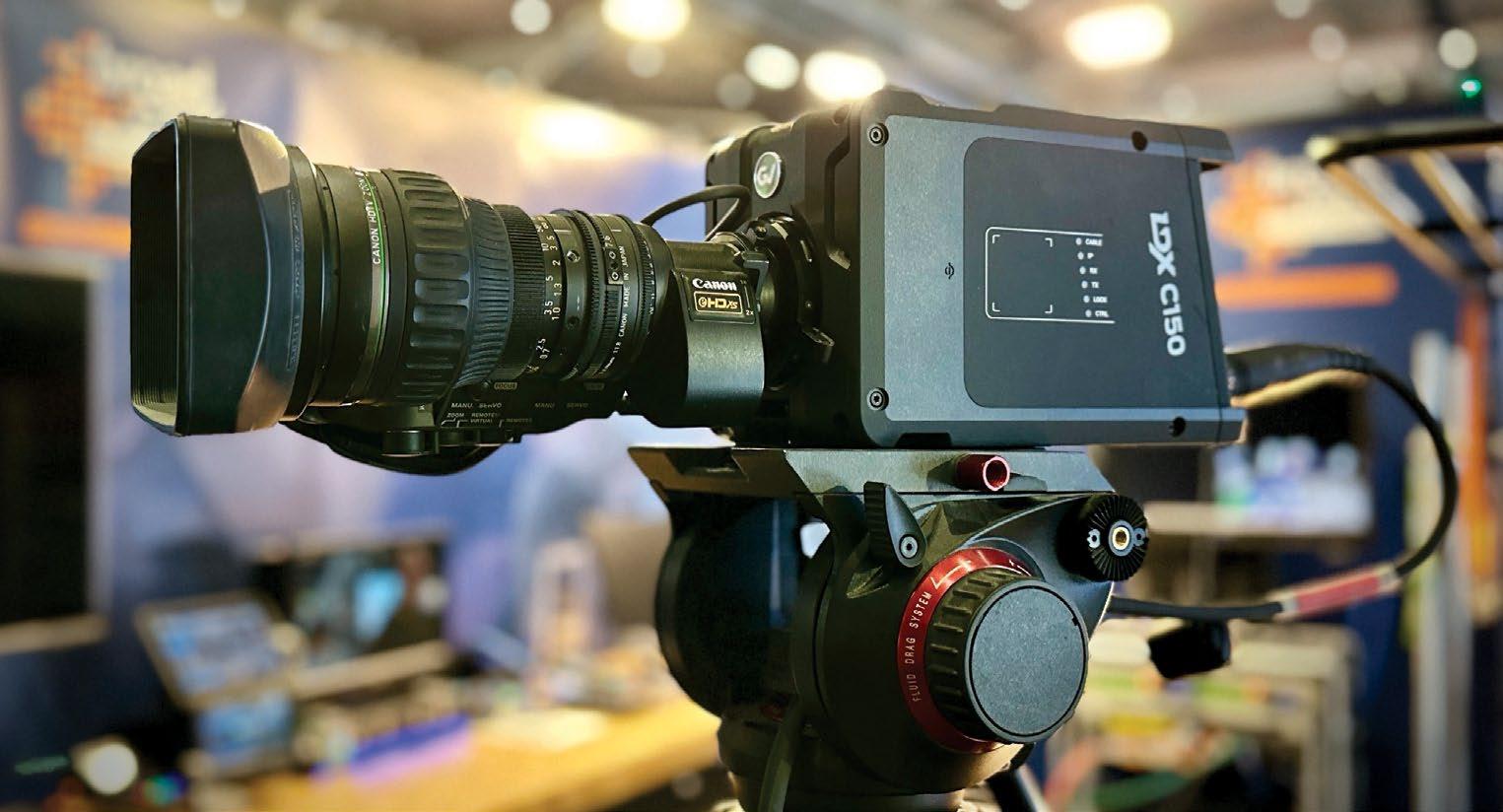
SDR broadcast is the moneymaker, according to Willox. “There's increasing outlets for 4K HDR but right now the sacrosanct image is the SDR. We've developed a Sony workflow where we shoot in HDR with one crew and one set of vision engineers but the SDR workflow takes care of the rest. I'm
“HDR makes a big difference, even on small screens.”
KLAUS WEBER, GRASS VALLEY
oversimplifying, but we've created a number of additions into CCUs and processing equipment… the crew can create the HDR broadcast with a perfect SDR broadcast side by side.”
“Some of the broadcasters come to us with [their shading approach] and say ‘this is what we need as a LUT in your cameras; we don't want to be using multiple layers of LUT boxes, we want something we can start with at the camera output.’” Willox adds. “They want a standard LUT in the CCU. In live entertainment, everyone wants to have their own look but from a broadcast standpoint I think there's going to be a lot of standardized LUTs… we're constantly developing new tools for this and at this NAB we’re going to introduce some new software for the HDR-C4000, our simulcast box.”
Super-35mm cameras are discussed less
than a few years ago, though perhaps because it is unremarkable rather than uncommon. Chase Hagen, ARRI’s technical sales representative and multicam expert, points out that the sensor is not the only crucial part of the chain.
“Our focus is on live productions that benefit from a sophisticated cinematic look,” Hagen said.
To that end, ARRI’s cameras include features more often seen in a CCU: “Our ALEXA 35 cameras deliver SDR and HDR simultaneously [and] the camera has a stock display reference transform that delivers images that are as similar as possible given the differences between the two formats,” he added. “With a recent firmware update, we now allow users to install their own display transforms for even more control.”
It’s tempting to assume lenses have infinite dynamic range, but Art Adams, product specialist for cinema lenses for ARRI, demurs. “Chromatic aberration and veiling glare can be extremely distracting in HDR,” he said. “It’s important to pair [the camera] with lenses that can deliver color and contrast information right up to the clipping point without compromising the rest of the image. ARRI Signature lenses were designed with that in mind… It’s a waste to make such a high-quality sensor if there’s no way to take advantage of it.”
All that picture information is useful for an industry which increasingly considers HDR the norm. Combined HDR-SDR workflows are, perhaps, the feature of the moment. For the future, long-distance IP networking, remote operation and 5G seem ascendant—but what’s clearest is that workflow innovations are increasingly limited mainly by the imagination of engineers. l
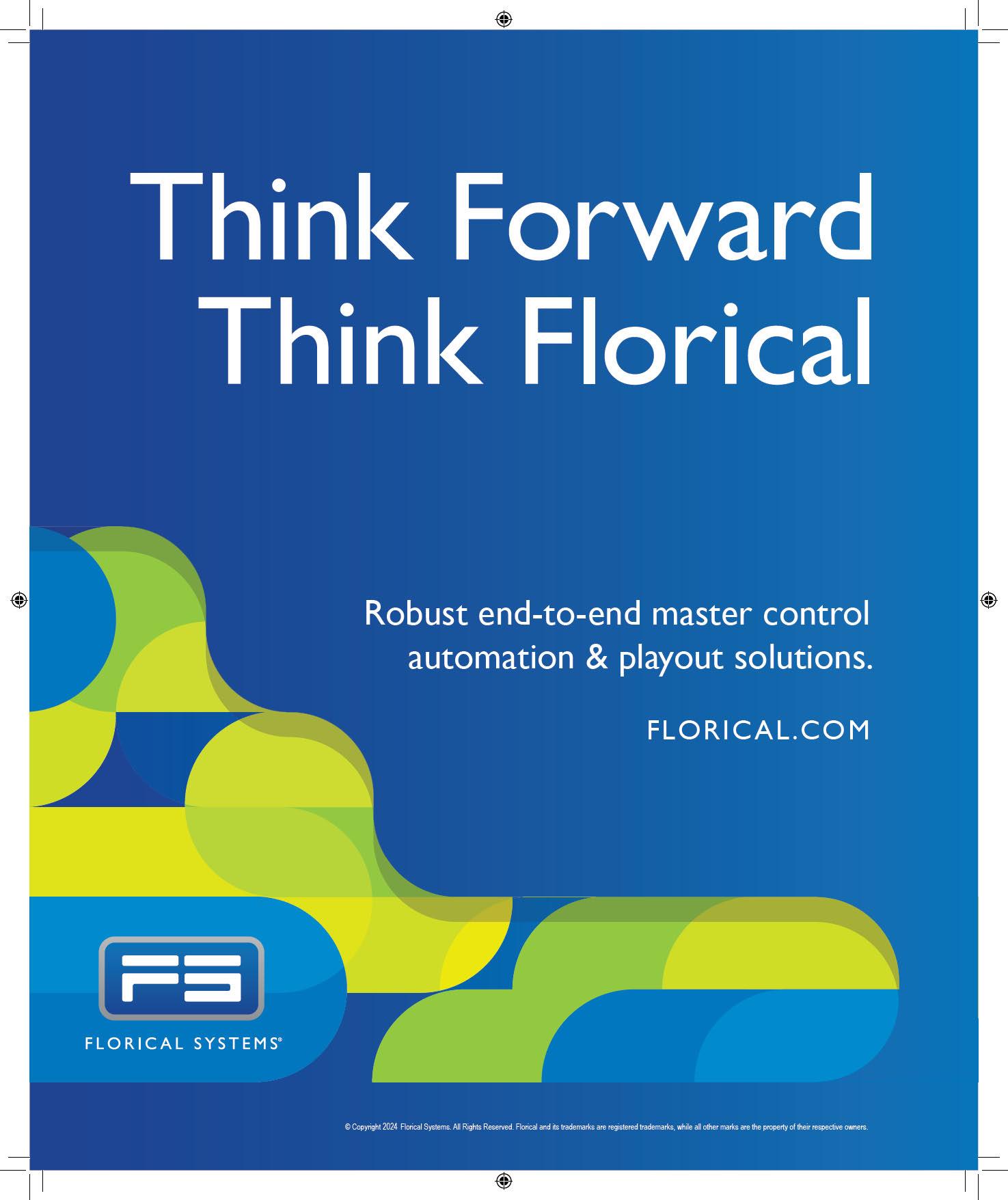
Efficiency, AI and the need to optimize remote production capabilities are among the watchwords among editing and graphics vendors as the 2024 NAB Show approaches.
“Key trends in TV/video graphics include the need for greater efficiency, which is essential in enabling broadcasters to remain and grow more profitable,” said Carol Bettencourt, vice president of marketing for Chyron. “Accuracy is also vital. On the sports side, we’re seeing a trend toward even more rapid playout. And finally, an overarching trend is increasing interest in cloud workflows.”
That’s not all. “Remote collaboration continues to be a driving force within the video editing world, and really in the postproduction world as a whole,” said Sarah Jones, senior technical solutions specialist for Blackmagic Design. “Producers and operators want to enable their teams to edit from any available system, from anywhere on the planet, while maintaining security,” added Ray Ratliff, Vizrt’s Product Evangelist, XR. “These requirements are driving cloud MAM and HTML client editing.”
There’s also a growing demand for immersive experiences, which are
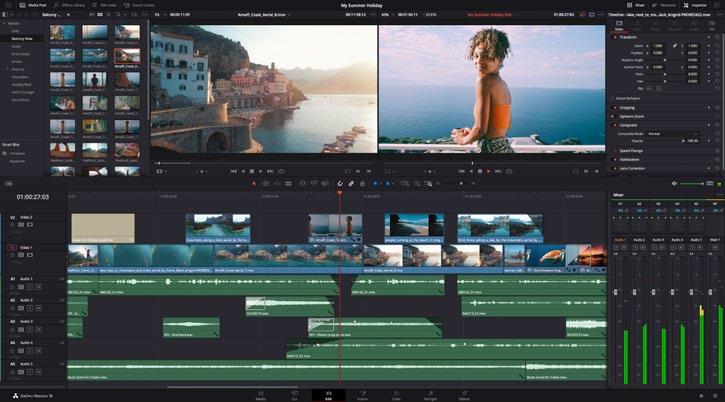
Blackmagic Design will show the latest updates to DaVinci Resolve, now with support for Blackmagic RAW 3.6.1 and Sony Burano files, as well as AI stabilization, improved support for compound clips in Open TimelineIO, and better
accelerating innovations in augmented reality and virtual reality graphics, according to Daniel Evans, senior vice president of



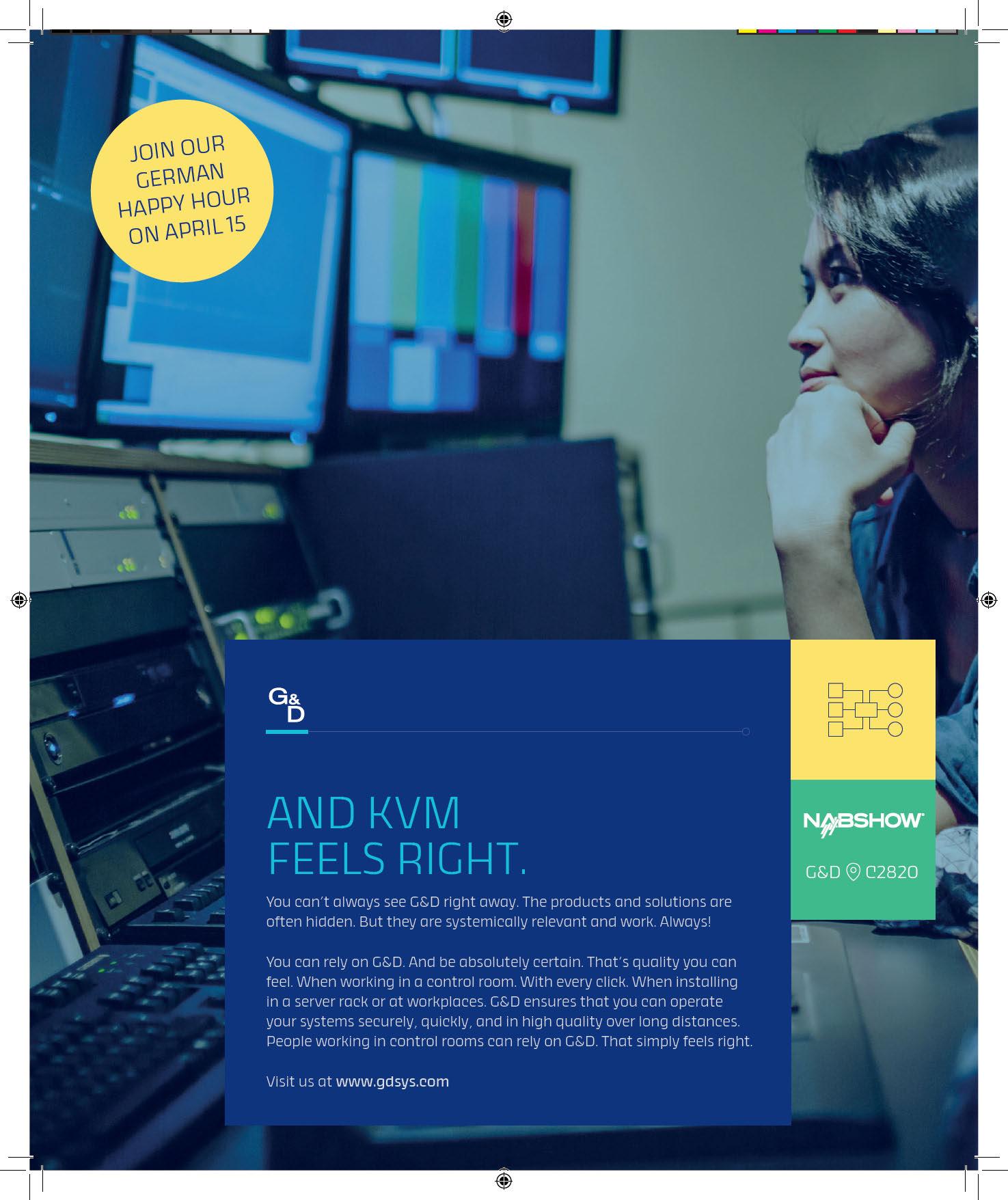

sales for Magnifi, a San Francisco-based developer of AI for broadcast technologies.
“Additionally, the rise of 4K and even 8K content is pushing the boundaries of visual quality,” he added. “Cloud-based editing solutions are gaining traction, enhancing collaboration and flexibility. Furthermore, AI-powered tools are streamlining workflows, from automated editing to realtime graphics generation.”
With changing viewer expectations and shorter attention spans, there is pressure to create visually captivating and easily digestible live sports events, says Steven Heimbold, CEO of Singular.live. “But it is also important to make the creation of quality graphics more accessible for all levels of sport, with solutions that offer fast onboarding and a great user experience,” he added.
At press time, many NAB Show editing and graphics exhibitors had not unveiled their plans, including Avid; although the company is implementing AI in many of its products, including ScriptSync AI in Avid Media Composer, which uses AI-enabled speechto-text technology to generate transcripts and automatically align media clips to scripts and transcripts. Avid’s new Media Composer PhraseFind AI, likewise, also uses AI speechto-text, letting editors search for clips using keywords, with automatic detection of 21 languages.
Blackmagic Design will showcase DaVinci Resolve Studio post-production software, the ATEM family of live production switchers, and Blackmagic Cloud Store, a storage that syncs and shares media with Dropbox and
“Producers and operators want to enable their teams to edit from any available system, from anywhere on the planet, while maintaining security.”
SARAH JONES, BLACKMAGIC DESIGN
Google Drive.
“DaVinci Resolve is a complete postproduction solution that lets everyone on a team work together on the same project at the same time,” Jones said. “Traditional editing has a linear workflow with each editor handing off to the next, introducing errors and mountains of change logs to keep track of at each stage. With DaVinci Resolve’s collaboration, each editor can work on the same project, in their own dedicated page with the tools they need.
“With the introduction of Blackmagic Cloud, editors, colorists, VFX artists, animators and sound engineers can now simultaneously work together from anywhere in the world,” Jones added. “Plus, they can review each other’s changes without spending hours reconforming the timeline.”
Perhaps no element of the content creation process has been impacted more by AI than editing and graphics, and advances in the technology will be omnipresent on the show floor.
Chyron’s booth will include a sneak peek at some of the latest graphics features the company has developed specifically for NBC Sports. “Attendees will also see a beta version of PRIME 5 [Chyron’s live production engine] and how that robust platform is coming into its own as a mature offering,” said Bettencourt. Cloud-based workflows are also on deck.
“We’ll also showcase PAINT 9.6, the latest iteration of our legendary illustrated replay
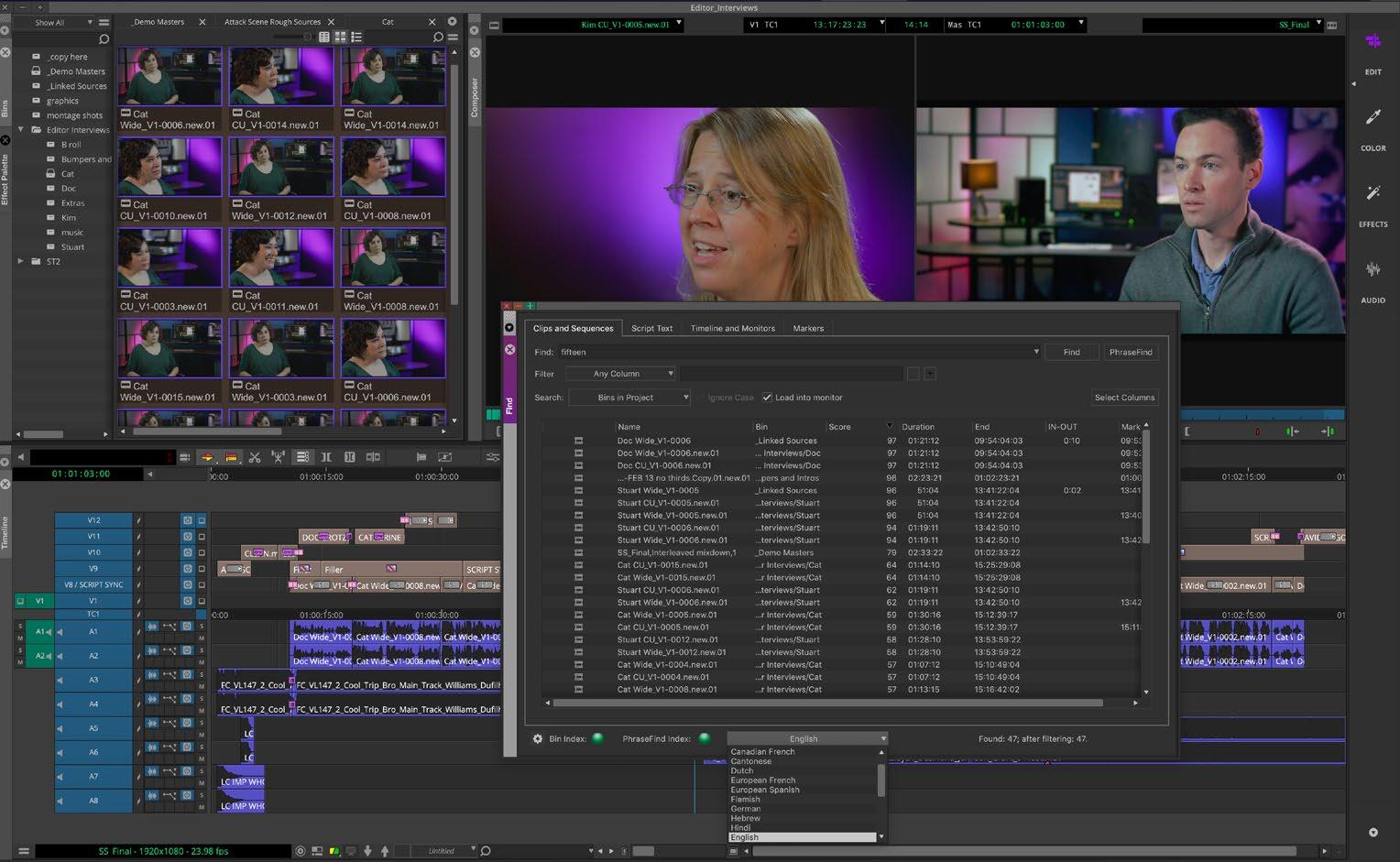
offering, now with brand-new AI features including seamless telestration across camera angles,” she said. “Virtual Placement will be on display as well.”
New enhancements to the Magnifi platform enhancements include advanced editing and storytelling capabilities, multichannel audio ingest, frame-accurate scrubbing capabilities, and rules-based package automation, according to Evans. “Additionally, we will highlight new features such as ‘AI-enabled Ball Tracking’ and ‘Bulk Autoflip.’
Magnifi is also introducing what Evans calls “design system as a service at scale”— an AI solution seamlessly integrated into the design system using LLM and a botable image generation solution. “We will also be demonstrating how one of the premier Division I Athletics programs leverages this platform to modernize their creative workflows across video, marketing, advertising, and player commercialization efforts,” he added.
Singular will launch “overlays.uno,” which
provides an optimized operator interface for Singular.live graphics.
“The Singular platform addresses the trend of accessibility by providing a low barrier to entry for users,” said Heimhold. “It allows content owners and creators to design and animate graphics, integrate data seamlessly, and enhance the overall production quality, contributing to engaging new audiences. Our cloud-based system saves hardware costs, supports agile workflows, and allows for customization based on specific requirements, which aligns with the industry trend towards more flexible production workflows.”
Vizrt will show how data-driven storytelling, XR and AR graphics, and virtual sets driven by its Viz Engine can create stunning visuals for covering important events. The company will also showcase tools for live sports production and analysis including Viz AI, Viz Flowics, Viz Libero, 3Play, Viz Arena, Viz Virtual Studio and TriCaster.
“With Viz AI, onscreen objects like cars or players can be tracked without multilayer

At its booth, Vizrt will discuss how the successful completion of the Amazon Web Services Foundational Technical Review process will impact its Viz Libero, the company’s flagship sports analysis product.
tracking systems, eliminating complexity, and expanding the possibilities of sports analysis,” said Chris Black, global head of brand and communications/AI evangelist, who sees 2024 as a year packed with important broadcast-worthy elections and international sports events.
This fact “means those who provide coverage must be on top of their game to deliver information to a global audience beautifully,” he said. l

With ATSC 3.0 (aka “NextGen TV) now reaching approximately 75% of U.S. households, emphasis at the 2024 NAB Show will be on refinements and new applications for the advanced broadcast format—the most visible being HDR (high dynamic range).
“We’re expecting broadcasters to begin ‘taking the new car for a drive,’ with the expansion of high dynamic range programming to show viewers one of the key advantages of the new service—exceptional video that is matched with the Dolby audio system,” said ATSC President Madeleine Noland.
“We’re calling this ‘the year of HDR’ because a lot of stations have received, or will receive, permission to scale services into High Dynamic Range,” added Dave Folsom, Pearl TV group’s engineering lead. “At least two encoder manufacturers can now do this scaling, and that will make the service better. In most locations it will be provided as a 1080p service.”
Mark Aitken, senior vice president of advanced technology at Sinclair Broadcast Group, also weighed on the addition of high dynamic range.
“HDR is very significant, and one of the promises of the ATSC 3.0 standard is better television for America’s living rooms,” said Aitken. “It was the focus of the ATSC at this year’s CES. CBS’s delivery of the February Super Bowl LVIII in HDR should spur others to add this enhancement to their ATSC 3.0 transmissions and I expect to see announcements from other networks,” said Aitken, noting that

HDR is nothing new at Sinclair. “We’ve been broadcasting HDR 24/7 at all of our stations with ATSC 3.0. Some 40 Sinclair stations are on the air with Advanced HDR by Technicolor.”
West Hall of the Las Vegas Convention Center will host most of the 3.0 exhibitors and perhaps the best first stop for attendees interested in 3.0 is the ATSC booth (W3056).
“We plan to showcase both the NextGen TV sets and also upgrade accessory receivers at the NAB Show to make sure broadcasters are aware of the variety of set-top devices coming for consumers,” said Noland. “Already, consumers have their choice of NextGen TV-certified and security-verified receiving devices from ADTH and Zinwell.”

“There are a lot of standalone devices now available to enable NextGen TV reception with legacy receivers,” added Pearl’s Folsom. “All modern TV sets have HDMI input capability, so when a conversion device is added the user can painlessly switch between ATSC 1.0 and 3.0. This should go a long way to greasing the skids to full adoption.”
Aitken says Sinclair will also have an exhibits-area presence at the show with ATSC, and both an “on-floor suite” not far from
datacasting. He also promised some surprise announcements at the show on recent major datacasting developments.
Aitken says he hopes there is news from the NAB Show on a date for sunsetting 1.0, giving broadcasters more bandwidth to roll out the full inventory of audio, video and data enhancements that are part of 3.0.
“I believe there’s good progress being made in the Future of Television Initiative [dealing with ATSC 1.0 switch-off and other 3.0 transition issues] within the industry, with the NAB playing a key role and the FCC and other regulatory bodies coming to an understanding of the nature of what has to happen in order to jettison the first stage of this rocket, ignite the second stage, and be securely in orbit.”
Anne Schelle, Pearl TV’s managing director, spotlighted another big NextGen TV development — “Run3 TV—that will be featured at the NAB Show.
“Run 3 is a powerful middleware solution that acts as an abstraction layer, simplifying the complex process of developing and deploying NextGen TV applications across varying operating systems and devices,” said Schelle, adding that it will allow broadcasters
the ATSC booth, and a Wynn suite, both demonstrating ATSC 3.0to reach wider audiences with more efficiency and less technical overhead.
“At the 2024 NAB show, developers such as Velope, Playanywhere, Gameloop, and Roxi will showcase the innovative applications and capabilities enabled by Run3TV, highlighting the platform’s role in driving the future of interactive TV,” Schelle added.
Along with the new and updated 3.0 applications, manufacturers have been busy developing new products to show on the exhibit floor.
Heading the lineup of new transmitters for ATSC 3.0 is the new E-Compact EC600HPBB3 series from Hitachi-Comark, optimized for LPTV/MPTV replacements and ATSC 3.0 SFN deployments, according to Joe Turbolski, Hitachi-Comark’s vice president of sales and marketing.
GatesAir will launch its Maxiva VLXTE-OP, “which essentially rounds out the top end of the Maxiva family for ATSC 3.0 transmission,” said Steve Rossiter, GatesAir TV systems applications engineer.
“We’re expecting broadcasters to begin ‘taking the new car for a drive,’ with the expansion of high dynamic range programming.”
MADELEINE NOLAND, ATSC
Although details weren’t fully available at press time, Rohde & Schwarz is also promising a new transmitter launch. “Rhode & Schwarz has developed a new and next-generation ATSC 3.0-native transmitter that embraces the liquid-cooled design and legacy while enabling operators to maximize their efficiency at minimized operational cost,” said Manfred Reitmeier, R&S’s vice president of broadcast and amplifier systems.“
Dielectric President Keith Pelletier says the company will show their latest antenna offerings, including the Powerlite TFU-WB-LP
series. “Dielectric has spent the last several years building out its portfolio of ATSC 3.0 solutions,” he said. “We are 95% there in terms of filling out the entire product line, which will essentially allow us to serve any ATSC 3.0 requirements. Dielectric expects to fill in some final gaps with new models at NAB 2024.”
Attendees will also want to check out Harmonic’s XOS media processor and cloudbased VOS 360 Media SaaS offerings. “These feature a unique cloud-native common software foundation and next-gen media processing technology,” said Jing Zhou, Harmonic’s director of broadcast solutions. “They enable broadcasters to deliver ATSC 1.0 and 3.0 services simultaneously and efficiently, with feature enhancements including AI-powered video compression and quality optimization, simplified SDR/HDR conversions, and more.”
Also, look for Sencore’s new AG 2700 for monitoring of both ATSC 1.0 and 3.0 OTA signals. It provides ASI and IP outputs signals, and includes SNMP functionality.
These new product offerings only represent a small sampling of NextGen TV technologies that will be on display at the 2024 NAB Show. l



TIt will come as no surprise that artificial intelligence (AI), virtualization and the cloud will be the major trends dominating the agenda at this year’s NAB Show. This applies as much to audio as it does to the visually oriented contingent that will be at the exhibition but the sound side is seeing some very different or specific applications of these shared technologies.
When it comes to audio mixing consoles, virtualization and cloud processing are “weekly conversations,” according to Henry Goodman, director of product management at Calrec Audio. “The majority of people want to talk about what will happen in the future with those technologies and how they might benefit from those kinds of workflows,” he says.
Another hot topic, Goodman adds, is, almost inevitably, AI. “It’s an area we’re all looking at with a great deal of interest,” he comments, “and we’re looking at it to see how it can provide benefits for us.
“On the console side, the area that would interest us is providing facilities that offer some kind of assistive mechanisms for the operators. It could be for balancing external feeds coming in or providing standardized EQ for certain types of microphones. It’s not something that is at the forefront of our development programme right now but we’re definitely keeping a close eye on it.”
AI and cloud processing were highlighted by other manufacturers in TV Tech’s focus on audio mixing consoles in the January edition. As with many technologies, virtualized mixing and processing is not an entirely new technology; it is now being used increasingly in radio, with Telos Alliance company Axia supplying consoles for one of the first implementations, the BBC ViLOR project, completed in 2019.
Martin Dyster, vice president of business development for TV at Telos Alliance, highlights another trend that, although it first appeared elsewhere in the world decades ago, is now gaining traction in the U.S.
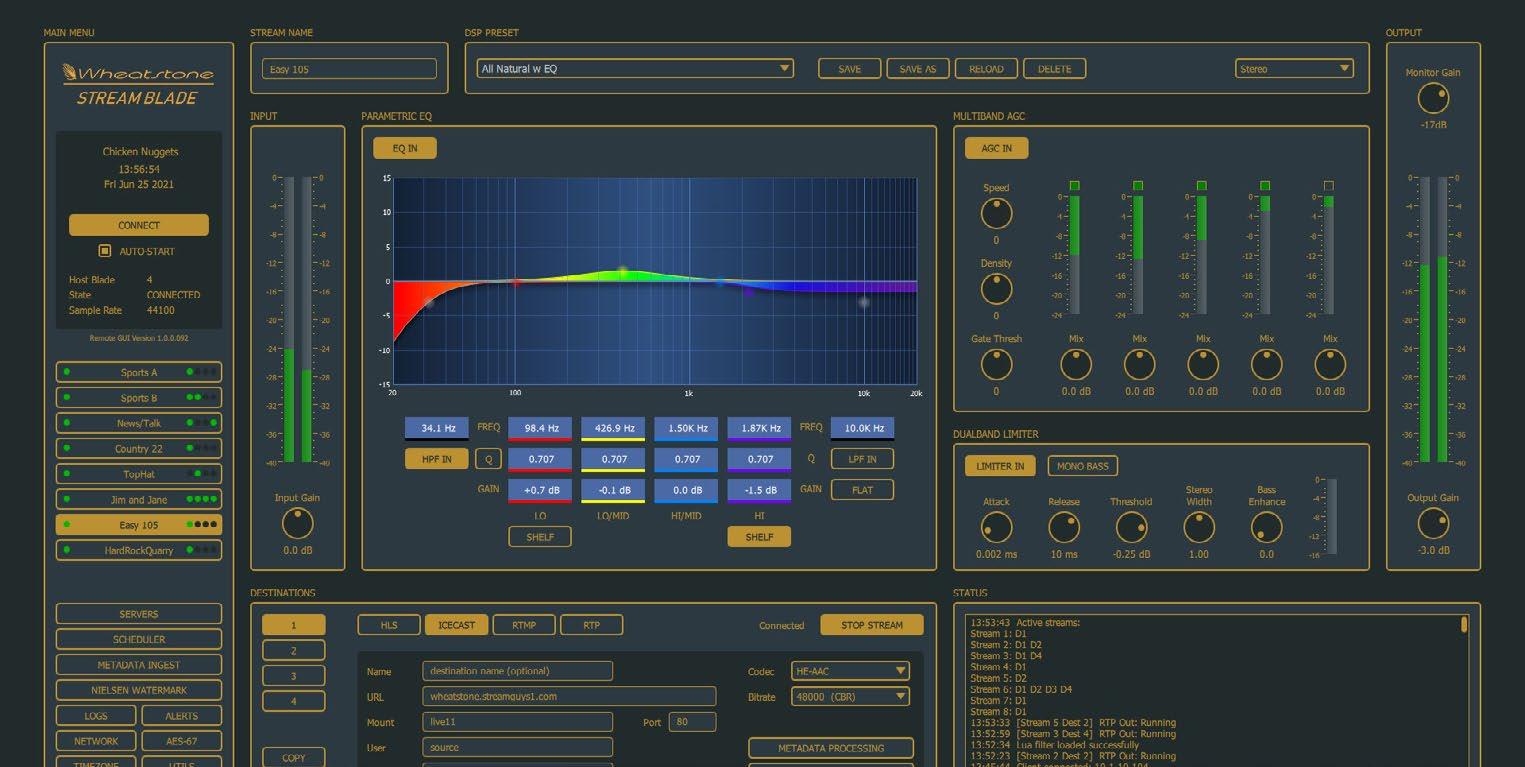
“Audio follow Video [AFV] is becoming increasingly prevalent, particularly in live news at local stations,” he says. (The AFV concept involves automatically adjusting the timing of audio signals to match the timing of corresponding video signals.)
“In some instances the consoles aren’t even a surface, they’re completely under the automation control of the orchestration layer managing the show,” Dyster adds. “This kind of ‘headless’ mixing is not new but the U.S. has caught up with it and it’s becoming widespread there.”
Similarly, Dyster continues, Europe is ahead of the U.S. when it comes to immersive audio, although NBC has broadcast Olympics in some form of immersive audio for the past decades. Christian Struck, senior product manager for audio production at Lawo, comments that broadcasters are currently demanding “intuitive and comprehensive immersive audio features,” with the ability to mix over wide area networks plus support for decentralized mixing involving several consoles.
“Just when immersive audio looked all set to take the world by storm, it was put on the back burner by the pandemic,” Struck says. “But it is back in full force, thanks to the ready
availability of playback devices, including smartphones and binaural headphones.”
The last few NAB Shows have seen the growth in products that conform to SMPTE ST 2110 for the transport of media streams over IP networks. But, as Phil Owens, senior sales engineer at Wheatstone, outlines, the cloud is the next challenge for the standard.
“We have seen the whole issue of 2110 environments, where a physical installation has two distinct networks, with audio and video on each,” he says. “The audio goes to both simultaneously, so if there is a drop-out on one, it picks up from the other instantly within a frame of audio. But there is now the issue of how a 2110 environment will work in the cloud, which is still in its early stages.”
Wheatstone is also devoting what Owens calls “a great deal of R&D” in its Layers cloud/server software platform for mixing, streaming and processing either at cloud data centers or local servers. However, he also sees more emphasis being put on voice processing, particularly for news and sports coverage.
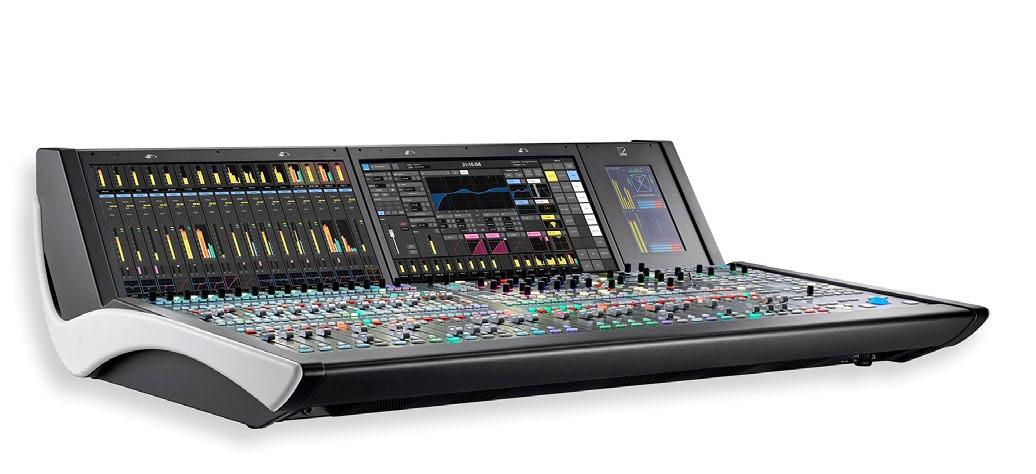
“Broadcasters can get away with less acoustic treatment or design in the studio and report from environments that they might not have broadcast from in the past because the mic processor can cover a multitude of sins,” Owens said.
Larry Schindel, product manager at Telos Alliance, agrees that processing is “quickly moving” into the virtualized space. “Cloud processing is gaining in popularity as more workflows migrate to the cloud,” he says. “But there is still a large base of customers who prefer to keep everything ‘on prem’ or at least use a bit of a hybrid approach.
“Some of the more common types of processing in use today are loudness control and upmixing but processes like Object-based Audio with Serial ADM [a metadata format for use with Dolby Atmos] and automatic voiceover mixing are also starting to emerge in the marketplace,” Schindel adds.
Loudness will again be a focus for NUGEN Audio during the NAB Show, with previews of the latest version of its VisLM3 metering plug-in. New features include user-defined program segments, which can be used where multiple integrated measurements are required, such as between ad breaks; support for up to 22.2 audio channels; stem monitoring; and loudness measuring for individual deliverables.
Professional audio is definitely seeing a “shift towards software-driven processing,” according to Will Waters, principal product manager at Audinate. This, he says, “underlines the industry’s commitment to leveraging advanced technology” to meet the evolving demands of broadcast production.
Waters also sees software processors having an increasing role on the intercom side of broadcast production. “This offers broadcasters even more versatility and efficiency in managing their intercom solutions,” he explains. “The evolution of broadcast technology, especially with digital and IP-based systems, has significantly impacted intercom.
“We’re now seeing Dante as part of intercom communications by being integrated into the networked audio infrastructure, enabling any number of audio mixes or routes to exist from the production equipment,” Waters added.
IP-based intercoms are now well established but, as Martin Dyster at Telos observes, the sector continues to evolve.
“We’ve found an increasing number of customers moving towards either full Live Cloud Production (LCP) or a hybrid of on prem and cloud,” Dyster said. “From the finance angle, and perhaps surprisingly, we’ve witnessed most of our customers adopt the Infinity VIP system via a one-time buyout capital purchase route. But we have also seen increasing interest in subscription models, especially where the intercom is associated with a cloud-driven video production system

like Grass Valley AMPP or Viz.”
Some intercom manufacturers were quicker to offer IP systems than others but now all the major brands have at least one system based on the technology.
“I think IP is now firmly in place,” comments Marco Lopez, vice president of engineering at Clear-Com. “There was a natural progression of first standardizing the way we were distributing audio signals across the various infrastructures and now those are being used for digital audio that could be wired but is also a means of achieving wireless audio connectivity where, typically, you would have had to build a network of antennas, especially for very large scale events with many users connecting to that environment.
“From a technology point of view it’s all about the standards now, ensuring we have good connectivity and integration using ST 2110, along with NMOS support. as well as AES67 and Dante,” Lopez added.
With such a variety of technologies and applications to investigate and discuss, it could be that audio is something of a trendsetter in Las Vegas this year (again). l


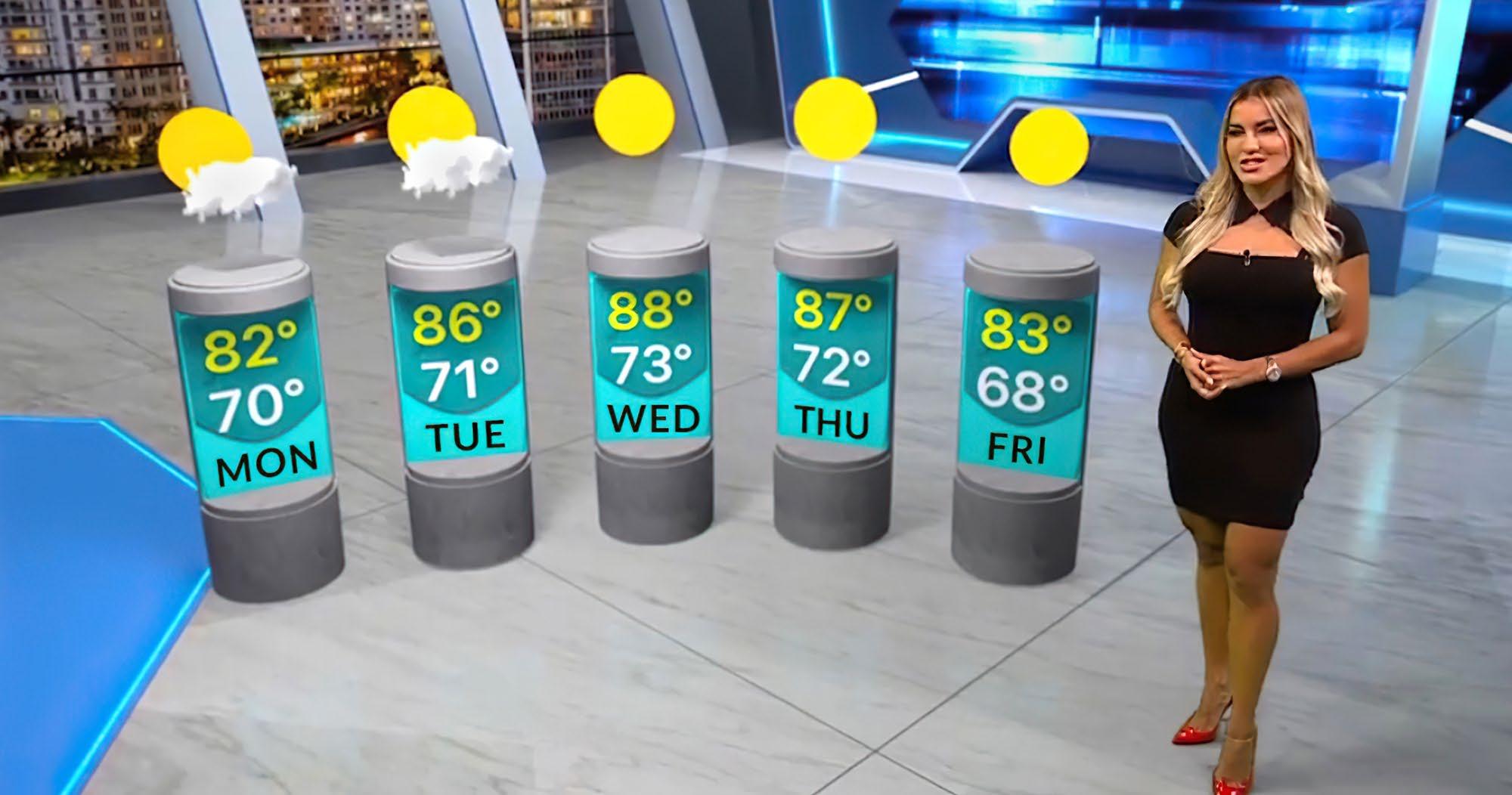
Techniques used in newsgathering have changed substantially in the past 20 years, and the same is true for live production. The same mobile technology that shapes what we carry in our pockets has made it faster and easier than ever to cover a breaking news story across town.
News and live-production operations have embraced mobile technology with a vengeance, and it is now widely used across the industry. And every year at the NAB Show, there are sleeker, faster and more capable products.
Everything hinges on the word “faster,” as we want our news to be right now. The broadcaster who wins the “right now” race is probably the broadcaster that gets the most views.
“With the proliferation of news websites, apps, and social media, audiences expect updates to be shared almost in real-time,” said Matt Scully, director of product management at Dejero. “For film, television and commercial production, teams can leverage a reliable, ultra-fast connection to enable real-time collaboration with dispersed teams and accelerate delivery of content from
the set directly to post-production, regardless of location—thus reducing the number of people required on set, and unlocking huge cost-savings.”
Scully pointed out that Dejero’s EnGo 3x with GateWay mode lets news crews broadcast breaking stories, quickly transfer files to prepare and upload packages while in the field, and set up high-bandwidth access points for multiple devices.
With the ability to get signals on the air quickly comes an increasing number of signal sources. Selecting among sources that grow in number can quickly cause a broadcaster to outgrow its source switcher, so TVU Networks
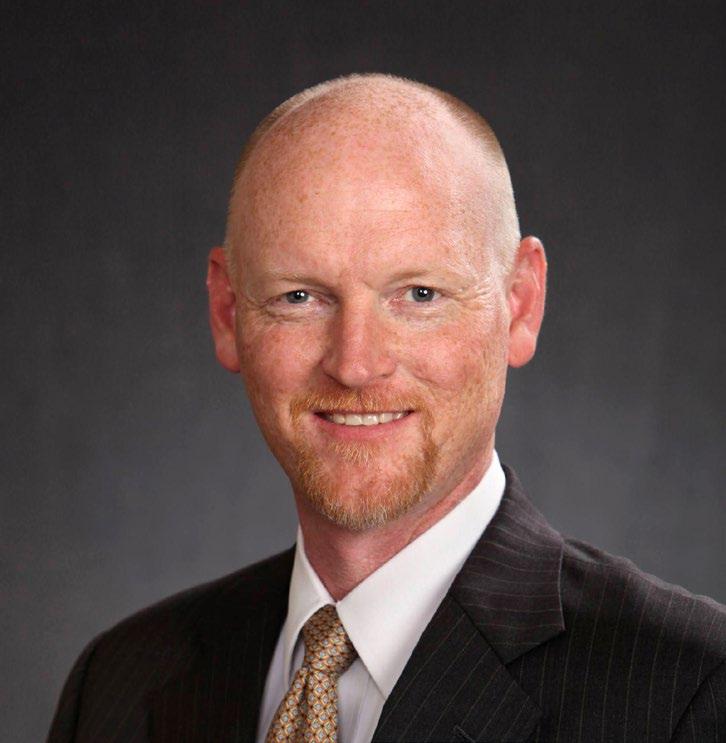
will be showing its new solution: TVU MediaHub. MediaHub accepts various input formats ranging from SDI, NDI, SRT and TVU Grid to YouTube and more. It can scale and direct outputs to multiple destinations in formats such as RTMP, HLS, TVU Grid and Facebook. MediaHub can be scaled up or down as needed, and charged by the minute as it is used.
“We’re eager to see how this platform will enable content creators and broadcasters to innovate and engage their audiences in novel, exciting ways,” said Paul Shen, CEO of TVU. “MediaHub is a portal to endless broadcasting possibilities.”
LiveU will be at the NAB Show demonstrating techniques for election coverage, as well as the company’s latest cloud remote production and sports workflows. The LiveU booth will also host several sessions from leading LiveU EcoSystem partners covering a range of contemporary use cases and workflows, including cloud-remote production, content aggregation and AI-augmented production.
“This will be a record-breaking year for live IP-video, with a very strong roster of global sports events, dozens of elections and other high-profile events all contributing to its growth,” said Steve Wind-Mozley, chief
marketing officer at LiveU. “Everything we will showcase at the NAB Show is designed to shorten workflows by reducing complexity and effort, and to add efficiency.”
Virtual studios can make a small space seem much bigger—and the same space can be news one moment, the weather report next and sports after that. Making it all work seamlessly in a live production is the key to virtual production.
ENCO will highlight its Qimera live virtual production and augmented-reality solution for broadcast and production studios. Qimera simplifies the complexities of virtual studio production, enabling broadcasters and content creators to produce immersive content with ease.
“This year, we will highlight how broadcasters can utilize Qimera for augmented reality in addition to virtual production,” said Ken Frommert, president of ENCO. “We will also debut an AI-generated virtual anchor within a 3D space. This is an example of how Qimera blends the physical and digital worlds.”
ENCO will also debut enCaption Sierra, an
automated turnkey encoding and captioning system, made possible through ENCO’s recent acquisitions of DoCaption, according to Frommert.
“There will be new features for Sierra that push the boundaries of what has been possible in captioning, and these will be announced closer to NAB. However, we are packing Sierra into an all-in-one system that includes a closed-captioned encoder along with live, automatic captioning software.”
EditShare will feature its cloud production and editing service called FLEX, including FLEX Cloud Edit and FLEX Cloud Sync. FLEX Cloud Edit provides media asset management, software-defined storage, and virtual workstations in a cloud environment provided by AWS. FLEX provides a completely open hosting environment, so users are free to use whatever editing software they prefer.
Collecting the news for a local station used to be done entirely in-house, using microwave trucks that beamed a narrow signal back to a dish on a tower at the station.
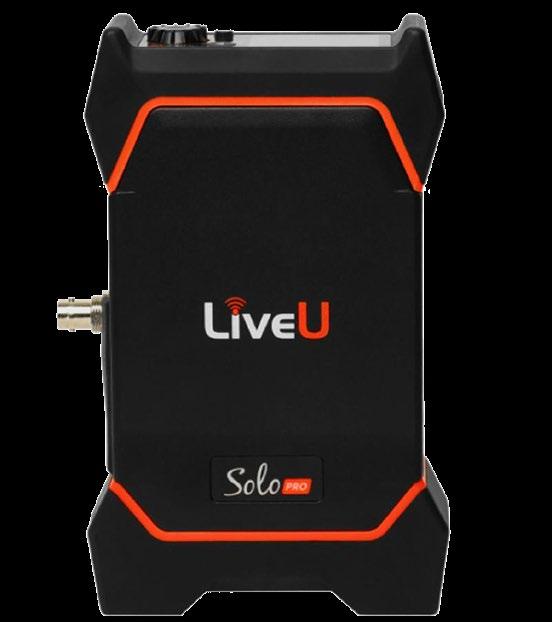
Similarly, live production frequently used satellite uplink trucks to transmit a signal that was received on a big dish at the station—as much as possible, the signal and its processing was kept in-house. That way the engineering department and management could be sure that the station had as much control over the signal path as possible.
In the past 10 to 15 years, that has all changed. Now, news remotes usually use public cellular carriers to send the signals over the internet, often shipping them to cloud facilities for storage and/or processing. Today it is possible to produce a newscast in the cloud with only some anchor feeds coming from the station’s studio.
And don’t be surprised if even that changes in the next couple of years. l
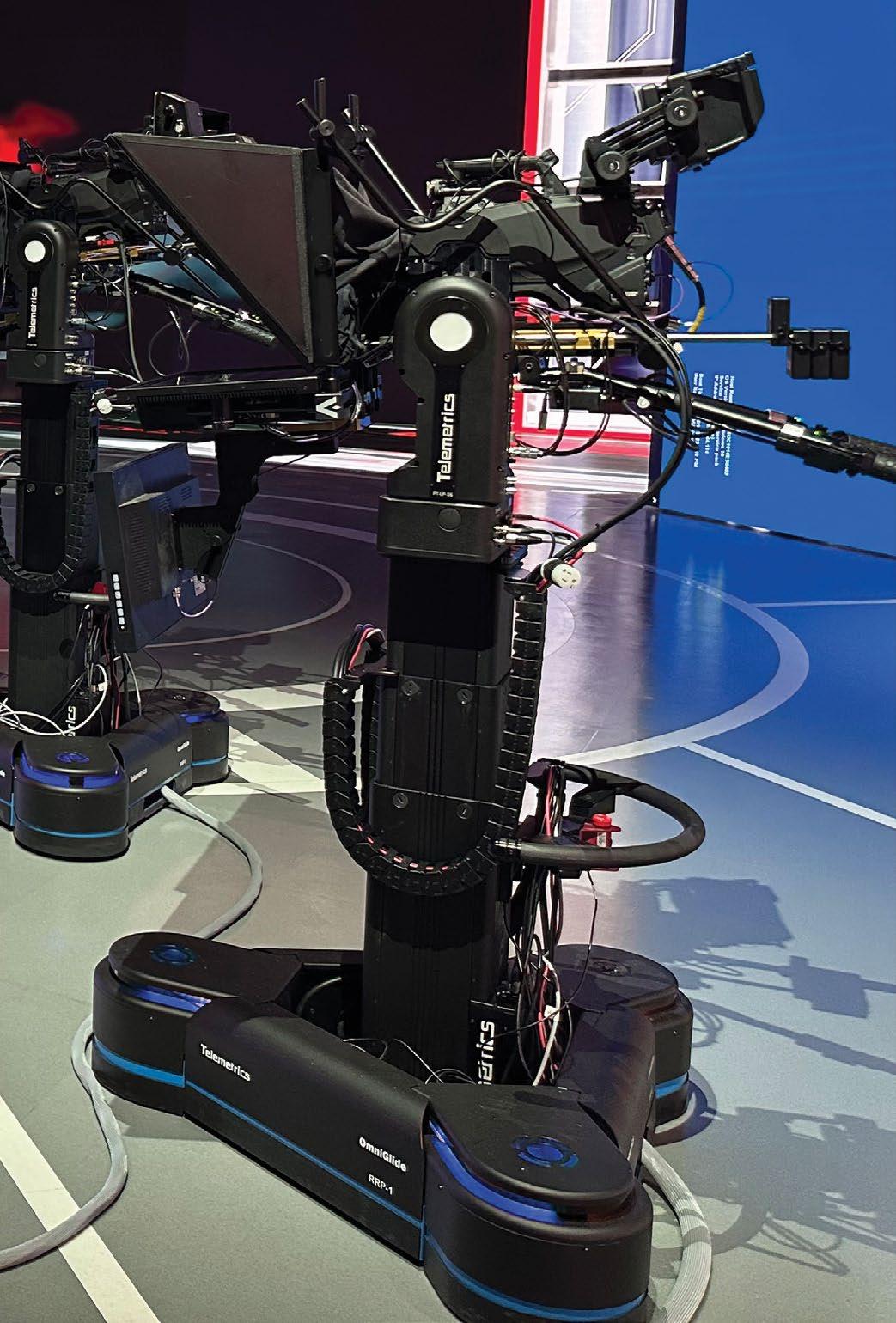
Dante AV 4K v1.1 is AJA’s first firmware update for its Dante AV 4K-T and 4K-R transmitter/receiver converters, which enable the transport and control of ultra-low latency, professional quality 4K/UltraHD/2K/HD/VESA Dante video and audio to/from 12G-SDI or HDMI 2.0 devices over a 1 GigE Dante AV network.
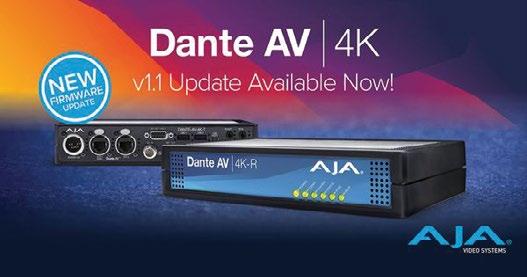
The update extends the capabilities of both devices with user-inspired improvements that answer modern workflow demands and provide AV professionals with more flexibility in the field as they integrate high-quality, visually lossless video into a diverse range of AV-over-IP environments. AJA Dante AV 4K v1.1 is available from AJA’s support page as a free download. AJA Dante AV 4K-T and 4K-R can be purchased through AJA’s worldwide network of resellers for $2,495 MSRP each.
z www.aja.com
ARRI’s 360 EVO is the company’s top-of-the-line stabilized remote head featuring 360-degree rotation on the roll and pan axes, a robust design and remote system integration.

Building on the success of the SRH-360, the remote head shares a new GUI and multiple accessories with TRINITY 2, creating an integrated lineup of hard and soft-mounted stabilizer options.
Running on the same software platform as TRINITY 2, the new head also shares the cables, brackets and same plates for mounting different cameras. Both can be controlled by the same tools, such as ARRI’s Digital Remote Wheels DRW-1 and new Digital Encoder Head DEH-2. LBUS connectivity enables efficient digital and metadata workflows, while the new software and GUI are focused on long-term Unreal Engine integration to facilitate virtual production.
z www.arri.com/en
Sony has updated the offerings of its Ci Media Cloud ’s cloud-based media management and collaboration solution by developing a new plan optimized for small and medium businesses and by adding valuable functionality to the platform. The new features include Ci Transfer, a new desktop file transfer app, and enhanced support for Dolby Atmos audio files.

“We’re continually evolving our Ci platform to better address users’ needs and become an even more intrinsic part of their daily workflow,” said David Rosen, vice president of cloud applications and services, Sony Electronics. “With the addition of a plan created to address the requirements and budget of small and medium businesses, a rich new desktop app experience, and Dolby Atmos audio for immersive, authentic sound, we’re making Ci even more accessible, easy to use, and powerful for creatives and organizations in every facet of the industry.” z www.cimediacloud.com and https://pro.sony

Amagi ADS PLUS, the CTV advertising arm of Amagi, has launched FAST Deals, a curated programmatic marketplace for FAST advertising. Designed to simplify and enhance the advertising experience, FAST Deals launches with more than a dozen curated programmatic inventory bundles that address the most commonly targeted CTV inventory, including news, sports, entertainment, seasonal and tentpole events, U.S. Spanish-language programming, and DEI-focused packages.
These bundles are underpinned by Amagi ADS PLUS’ partnerships across a breadth of leading content owners and FAST innovators. FAST Deals is currently available across leading programmatic CTV exchanges in North America. Amagi ADS PLUS and the FAST Deals marketplace are built on the foundation of Amagi’s FAST platform, which currently facilitates content creation, distribution, and ad insertion across more than 110 million hours of viewing and more than 1 billion ad impressions.
z www.amagi.com
The Ultra 7 monitor is the new flagship in Small HD’s Smart 7 Series and is powered by the same technology that drives SmallHD’s 4K production monitors. It integrates with Teradek’s Bolt 6 wireless platform and is engineered to perform in any production environment. Ultra 7’s color-accurate touchscreen can display up to 2300 nits full-screen luminance.
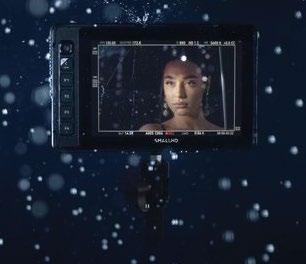
The monitor provides the I/O needed to meet the dynamic needs of cinematic productions, including 6G-SDI inputs for ingest and passthrough of up to 4Kp30 video signals, enabling critically accurate focus and detail when zoomed in pixel-to-pixel. Dual 2-pin power connectors enable users to output power for accessories, SmallHD’s PageOS software can be controlled flexibly via touchscreen or joystick. Large tactile buttons enable customization and function access, the company said. SmallHD has priced the Ultra 7 at $2,999.
z https://smallhd.com/
JVC Professional Video’s new RM-LP450G Slow-Motion Controller
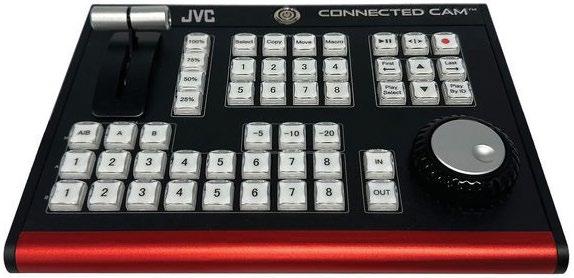
for its vMix Studio Switchers, was created specifically for sports broadcasting, sporting a new controller designed to increase the speed of a live playback workflow. With a modern appearance and simple control layout, the RM-LP450G offers 38 backlit keys to help quickly identify important functions and reduce the chance of errors.
To streamline replays, the controller is also equipped with quick-action Playback Search Disks and Control T-bar for speed control of the video playback. Up to eight video inputs can be instantly accessed to capture the action from multiple camera angles and tailor playback for analysis and programming.
z www.jvc.com/usa/pro/professional-video/

Wohler Technologies’ new 2U iVAM2-12G 16 channel audio/video monitor is designed to build on the success of the company’s iVAM1-12G, launched mid-2022 and is shipping now.
The new iVAM2-12G can monitor and meter up to 16 channels of 12G-SDI audio and video, plus two channels of analog audio in a compact 2U format. With 64 presets and utilizing dual touchscreens, operators may toggle between video, meters, loudness measurement and menus. A HDMI output allows additional external monitoring of the currently selected video source, while analog XLR, headphone and selected 3G-SDI outputs are also included as standard. For added flexibility, upgrade options are available on the rear panel for monitoring AES3, MADI 64 (including a fiber option), SMPTE 2110, and SMPTE 2022-6. z www.wohler.com
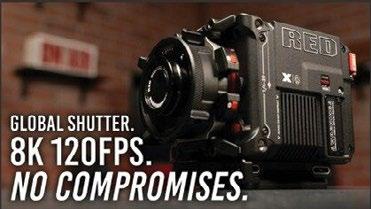
RED Digital Cinema’s new V-RAPTOR
[X] 8K VV and V-RAPTOR XL [X] 8K VV cameras feature the acclaimed low-light performance, dynamic range, resolutions, high frame rates and form factor of their V-RAPTOR predecessor. The V-RAPTOR [X] introduces RED Global Vision, which includes an all-new 8K VV global shutter sensor, enabling innovative features including Extended Highlights and Phantom Track.
Additionally, the V-RAPTOR [X] and V-RAPTOR XL [X] systems offer increased exposure times, a further optimized optical cavity and improved audio performance. Phantom Track dual-capture streamlines any virtual production environment employing GhostFrameTM or frame-remapping, capturing distinct R3D clips per LED wall view, as well as allowing for monitoring of either view live on-set over each SDI. z www.RED.com

Quicklink has launched Quicklink TX (Skype TX) 2110, bringing the integration of Skype and Microsoft Teams callers into ST 2110 media workflows. This new support enables the Quicklink TX solution to integrate seamlessly with uncompressed IP video workflows conforming to the SMPTE ST 2110 specification.
The SMPTE ST 2110 suite defines standards for transporting video, audio, and metadata essences as separate streams over professional IP networks. Quicklink’s support for ST 2110 empowers broadcasters to unlock new efficiencies in live production. Quicklink TX is offered in numerous channel configurations to integrate remote Skype and Microsoft Teams guests into live productions with exceptional full HD quality. Quicklink’s platform also supports NDI, SRT and Dante. z www.quicklink.tv/products

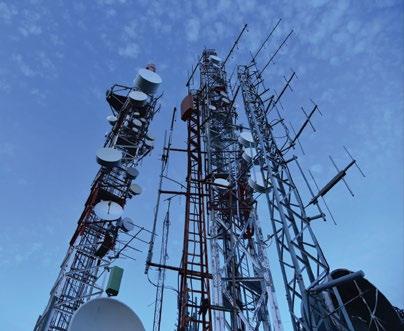
Anywave Communications Technologies has unveiled a complete ATSC 1.0/3.0 signal chain aimed at addressing the frustration of working with multiple vendors and dealing with incompatibilities between their products, especially as it relates to the 3.0 transition. The key items in the signal chain consist of two rackmount chassis Anywave products: Exciter+, a 1.0/3.0 exciter with adaptive correction capability exceeding the performance of Anywave’s previous exciters; and Encoder+ that is configurable for HEVC and AC-4 encoding or MPEG-2/MPEG-4 and AC-3 encoding.
Exciter+ also can incorporate a full ATSC 3.0 broadcast gateway with all modes of 3.0 supported. It can also be configured as an RF input translator for 3.0 or 1.0 service. In addition, Encoder+ contains the signaling server needed for 3.0 implementations. z https://anywavecom.net
Teradek TV is a live-feed and instant-recordings review platform designed specifically for production. It allows productions to set up and share encrypted ultra-high-quality video feeds with low delay, providing creatives, executives, and other stakeholders the ability to collaborate in real-time.

The scalable solution allows for permission-based visibility across studio-level production slates in real-time, with live feeds, downloadable instant proxies for dailies, editorial, VFX, cross-platform colour management, and metadata support. Military-grade encryption blocks unauthorised access to content and utilises user-specific watermarking on every frame. Teradek TV features include color-accurate 4K HDR, multi-camera live feeds, instant recordings playback, and visibility across multiple productions.
z https://teradek.com

Vinten, a provider of robotic camera support systems and a Videndum brand, has released v1.1 of its VEGA Control System Software, which now incorporates AI-driven Presenter Tracking in partnership with Seervision. v1.0 of the VEGA Control System, which became available last summer, elevated the control capabilities of the legacy Vinten HD-VRC Control System by introducing a dynamic interface and a modular software architecture. The hardware-agnostic architecture allows for seamless virtual deployment.
With VEGA Software v1.1, broadcasters can now integrate VEGA Presenter Tracking into their workflow. This feature is fully embedded in the VEGA Client Interface and familiar shot selection grid. VEGA Presenter Tracking integrates Vinten’s on-air motion quality and broadcast features with Seervision’s AI-driven talent tracking and reframing technology, creating an optimized system for studio environments. z www.vinten.com/en/

Sachtler Cine Series fluid heads are designed for cinematographers. Fusing the company’s cinematic heritage with its core values of quality, speed and practicality, the new fluid heads are designed to meet the needs of cinematographers who work solo as well as those who are members of a larger production crew.
Three models: Cine 20, Cine 30 and Cine 50, comprise the Cine fluid head series. Combining innovative features, reliability and flexibility, the heads offer controlled, smooth camera movement through variable drag settings and fine counterbalance. Shared features across the series include a secure sideload mechanism that simplifies mounting and balancing of highly accessorized cameras for fast adaptation to dynamic shooting challenges. A rosette allows for the use of a front pan bar, providing extra control. z www.sachtler.com/en/
Motion Impossible has expanded its AGITO flagship dolly system with AGITO Cine, specifically tailored to meet the demands

of cinema production, with a larger core, expanded wheelbase and increased ground clearance.
Built to handle heavier camera payloads, the system has been designed with producers, directors and DoPs in mind, offering greater flexibility in resource allocation across various production needs. It also signifies a shift towards a collaborative business model, inviting users to contribute to its evolution through feedback. AGITO Cine is available as an exclusive rental option provided by Camera Revolution in the UK and CineMoves in the U.S.
z https://motion-impossible.com/

Pixotope has added what it says are industry-first zoom capabilities to its through-the-lens (TTL) camera tracking software solution, Pixotope Tracking – Fly Edition (Pixotope Fly). The zoom capabilities go beyond the current limitations of one fixed lens position on drones and other cameras, enabling more dynamic shot composition for augmented reality (AR), extended reality (XR), and virtual studio (VS) workflows. The new feature enables users to zoom in and out of a space without physically having to move the camera.
The TTL tracking solution uses visual feature points like geological formations, tree patterns, or architectural details to dynamically anchor the AR graphics and create a virtual point cloud reference system that adapts to changing conditions, eliminating the need for tracking hardware, such as physical markers, camera and lens encoders. z www.pixotope.com
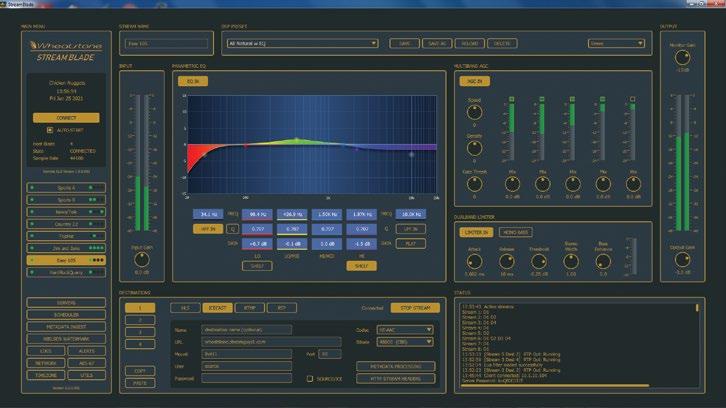
Wheatstone recently received certification of its core streaming software from Nielsen for inserting the ratings firm’s Portable People Meter (PPM) encoded watermark, and now that capability is available to broadcasters from their streams and in the cloud. Wheatstone’s Layers Stream, a full suite of software for streaming from an on-premise service or a cloud data center, now supports the watermark as does the company’s Streamblade and Wheatstream AoIP streaming appliances.
Whether streamed from a Wheatstone appliance, an on-prem server or in an AWS cloud data center streams can be counted separately or tallied with on-air listenership to attract advertising buys.
z www.wheatstone.com

Cineverse 360 (C360) is a new ad platform that connects broadcasters with 82 million monthly viewers across the company’s owned and operated partners.
C360 will offer custom marketing integrations including audio opportunities on the Cineverse Podcast Network, display, social, experiential in-person events, and connected TV (CTV) advertising on the company’s owned and operated free, ad-supported FAST channels. Cineverse is also launching the Cineverse 360 Audience Network (CAN), offering a scalable solution to reach audiences across a network of Cineverse and third-party publishers, Advertisers will be able to have access through CAN and its partners to hundreds of FAST channels with inventory on platforms including Philo, Plex, Samsung TV Plus, Vizio Watchfree, Xumo and others. z https://www.cineverse.com/

Digital Alert Systems has released an update of Federal Emergency Management Agency (FEMA) digital certificates used to authenticate messaging from the Integrated Public Alert and Warning System (IPAWS). The release includes updated IPAWS Certificate Authority (CA) credentials for the DASDEC and One-Net series of Emergency Alert System/Common Alerting Protocol (EAS/CAP) encoder/ decoders to replace the current certification chain that expires on April 14. This is a free update for all U.S. DASDEC and One-Net users. The new certificate is fully functional right now, so customers are advised to replace the existing certificate to ensure the required message authentication continues to operate correctly.
The new certificates will also be packaged with the forthcoming DASDEC V5.3 release, so customers planning to update to that version can wait and get their certificates then if they wish, as long as they do it before April 14.
z www.digitalalertsystems.com
Clear-Com’s new Gen-IC Cloud Intercom system is a secure and flexible virtual intercom solution that can be easily integrated into on-prem hardware with virtual intercom clients. Designed for scalability, Gen-IC Cloud Intercom allows end-users to quickly ramp up multiple virtual clients as needed, with the unique capability of integrating with Clear-Com’s extensive hardware infrastructure over LAN, WAN, and the Internet.
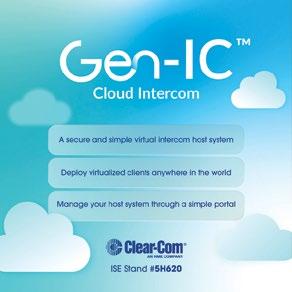
Clear-Com has developed a unique virtual intercom application that can be deployed on selectable regional targets, minimizing the latency inherent when going virtual by allowing administrators to easily deploy Gen-IC Cloud Intercom closest to where teams are working. z www.clearcom.com/Products



Thomas Nelson has been appointed global VP of key accounts, focusing on expanding Vizrt’s business in the Americas. Nelson has over 20 years of experience in media technology. Beginning his career at TV 2 Norway in sports production, Nelson moved to Vizrt Australia in 2008 and has held senior leadership roles in Asia Pacific and Europe. To support Nelson, Vizrt is expanding its U.S. team with several new positions within its key account organization.

Atomos
Peter Barber has been appointed COO/Executive Board Director for Atomos as part of a company restructuring and broader recapitalization. Barber has over 30 years’ experience in production and post-production, including three years at Apple where he was responsible for the rollout of Final Cut Pro and other video solutions in Asia Pacific. As is cofounder and co-owner of Blackmagic Design, Barber led the negotiation and acquisition of seven companies over an eight-year period.
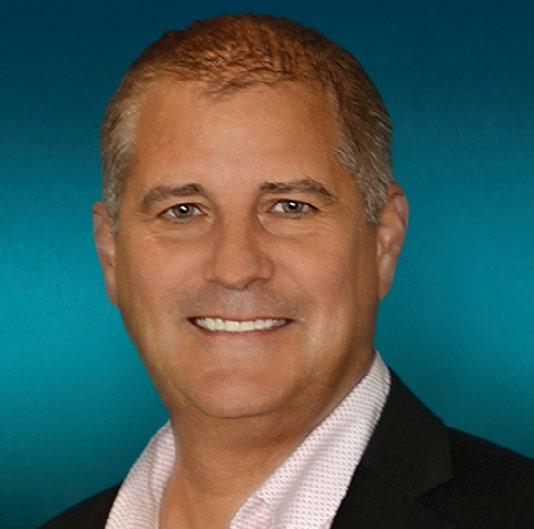
John Miller has been appointed VP of global sales where he will guide international sales teams across AJA’s product lines. Miller was previously with Vizrt, where he spent more than two years overseeing major broadcast accounts as enterprise sales director. Miller also spent seven years at Avid and was senior sales director for the U.S. and Canada. He is also former VP of worldwide sales and marketing for Autodesk’s M&E division.
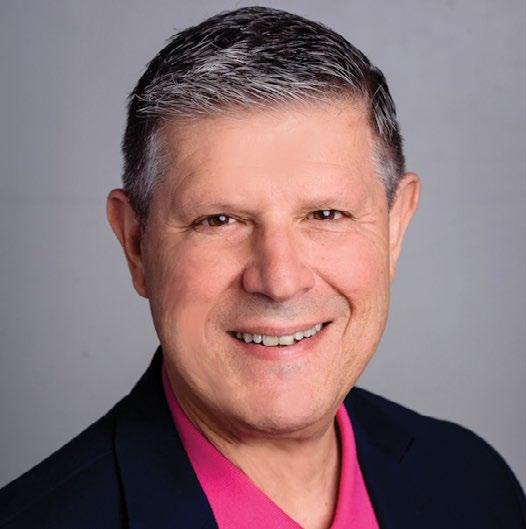
Telemundo Station Group
Veteran Spanish-language media executive and longtime leader of WKAQ/Telemundo Puerto Rico
José Cancela has been named president of Telemundo Station Group. Cancela will provide strategic and operational leadership to the NBCUniversal Local media portfolio that includes Telemundo stations in 31 markets across the U.S. and Puerto Rico, including in each of the Top 20 U.S. Hispanic TV DMAs. Cancela has over 35 years in leadership roles and more than four decades of media experience.
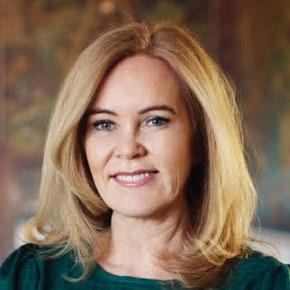
Lise Heidal has been appointed President, NEP Europe for NEP Broadcast Services. Based in Norway, Heidal will set the strategy, priorities and focus areas for Northern, Central and Southern Europe, as well as the U.K. and Ireland, to lead the future planning of NEP’s broadcast services. Previously she served two and a half years as VP of Production at TV 2, the largest commercial broadcaster in Norway. She is also a former Managing Director of NEP Norway.

John Halley, president, Paramount Advertising, Paramount has been appointed the new chair of IAB’s Board of Directors. Halley has served on the board since March 2021, most recently as the vice chair. Halley succeeds Alysia Borsa, chief business officer and president of lifestyle, health and finance, at Dotdash Meredith. Borsa will remain on the IAB Board and on the Executive Committee. Additionally, Shenan Reed, global chief media officer of General Motors, will move into the role of vice chair.

Stacey Lynn Schulman has been hired EVP, platform marketing and intelligence and will be responsible for driving demand and developing opportunities for advertisers to connect with Nexstar’s local and national audiences. Schulman will lead Nexstar Advertising’s integrated marketing efforts and oversee the sales intelligence business unit. Schulman is an award-winning marketing strategist and thought-leader with over 25 years of experience in the media industry.

The EW Scripps Co.
Tony Song has been hired for a newly created role of head of network sales and advanced TV where he will spearhead Scripps’ go-tomarket strategy and drive longterm revenue growth with a strong focus on advanced TV, CTV, sports and news. Song was previously with AMC Networks, where he served as SVP of ad sales and partnerships. Prior to AMC, Song led East Coast national media sales for BET and steered national television buying for media agencies MediaEdge, Universal McCann and BBDO.

